- Free shipping on all orders

- North America
- South America
- Middle East
- Australia & Pacific
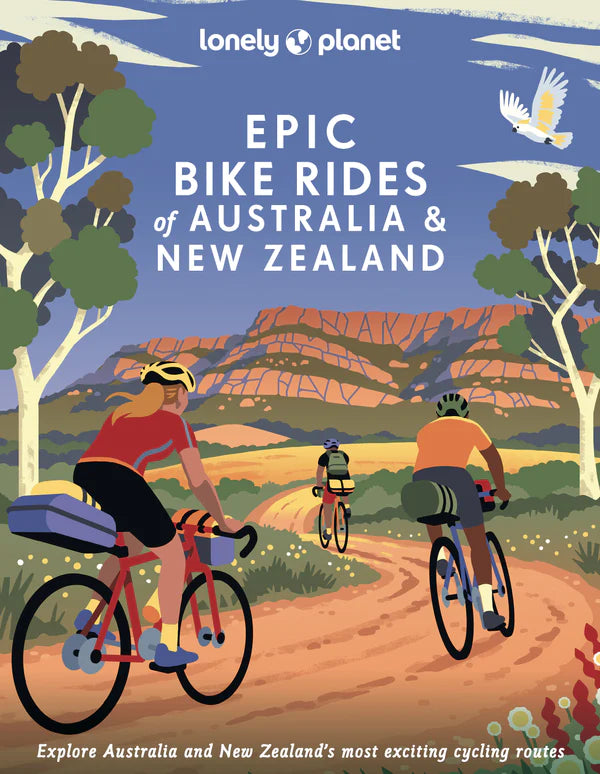
New Releases

Trending Destinations
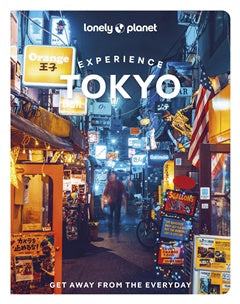
Experience Guides
- Outdoor Travels & Adventures
- Epic Guides
- Food & Drink
- Gifts & Inspiration
- Language Guides
- Lonely Planet Kids
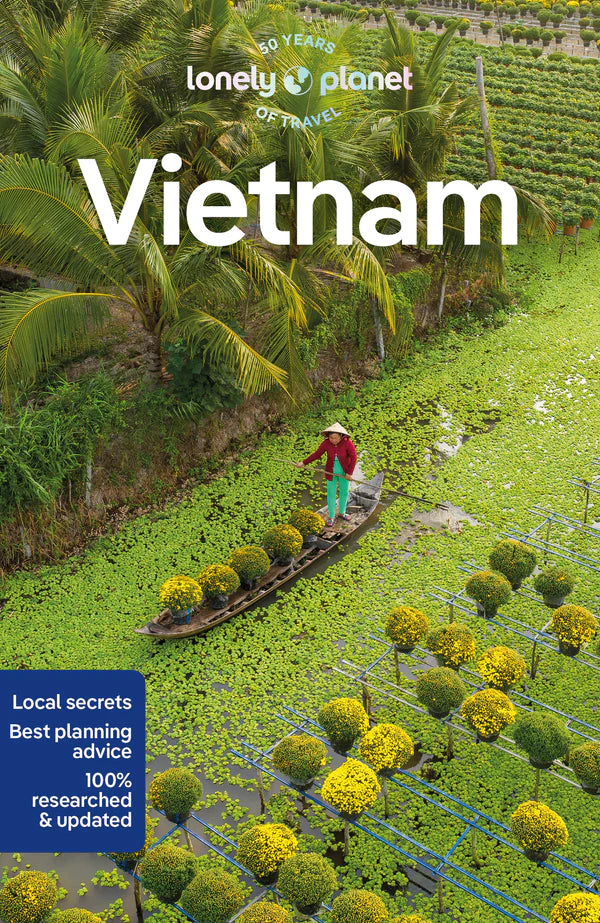
Country Guides
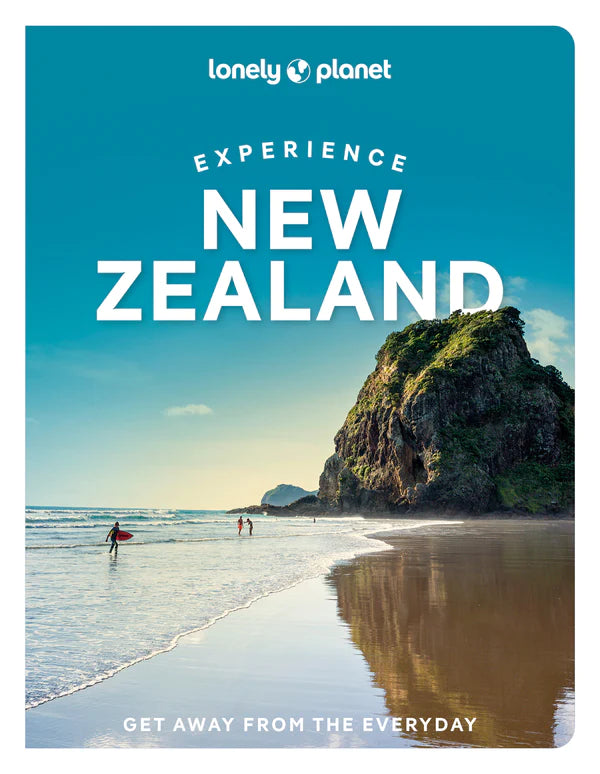
Pocket Guides
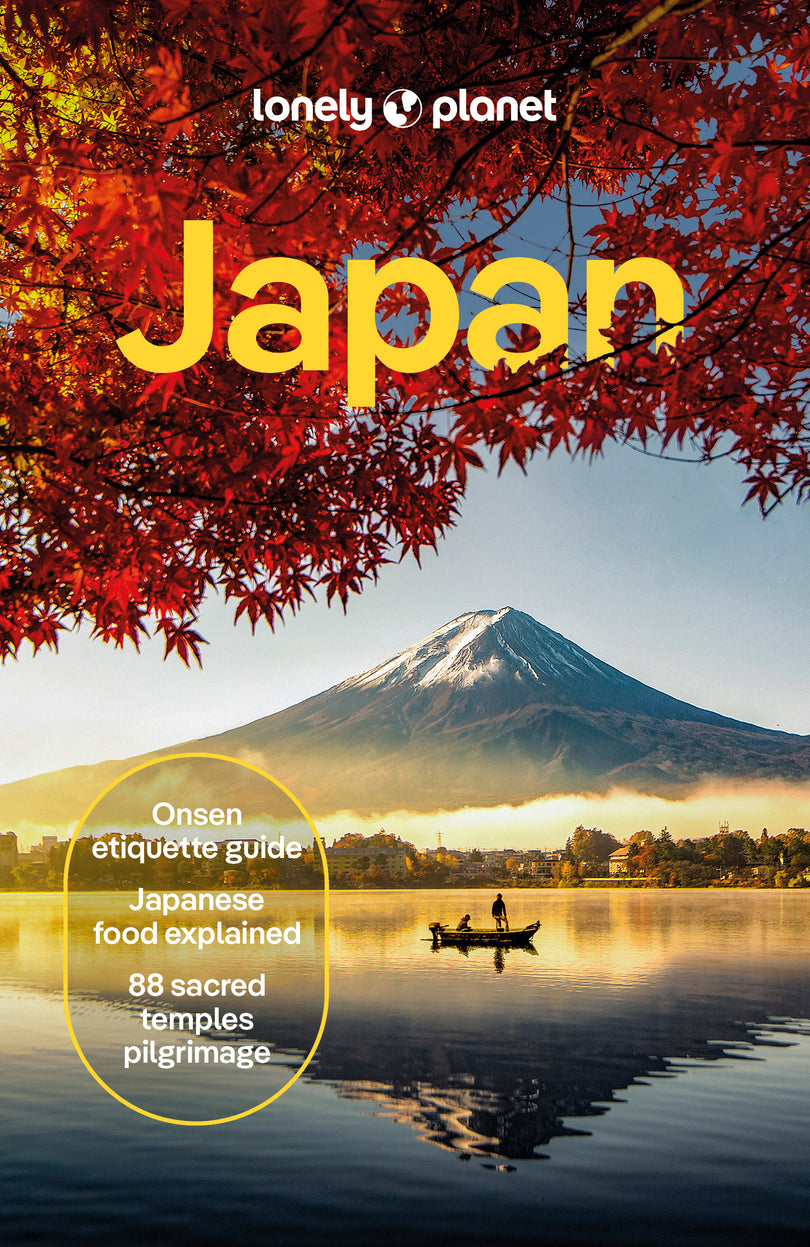
All Guides & eBooks
- Lonely Planet Insider
Your cart is empty

The Sustainable Travel Handbook
Get this book for free by becoming a Lonely Planet Insider:
- 3 eBook downloads every year
- Exclusive offers and discounts
$2.99 USD/month (charged annually) Learn more
This practical and inspiring guide, the latest in our popular Handbook series, motivates travellers to take a responsible approach to the impact of travelling. Whether you’re looking to reduce your carbon emissions, enjoy more a responsible wildlife-watching experience, harness culinary tourism for good or enjoy an eco-friendly city break, this guide has got you covered.
Packed with easily-digestible advice compiled by a sustainable travel expert, eco-conscious travellers will be introduced to a wide variety of destinations offering culture, wildlife, luxury, adventure, wellness and much more, as well as subjects such as the development of electric transport, how to reduce your plastic waste and the best ways to visit explore sacred indigenous culture respectfully.
With top five and top ten lists discussing the best places to hike, volunteer, scuba dive and snorkel responsibly, as well as where to enjoy sustainable safaris, family trips and the best ways to give back when you travel, no stone is left unturned in this 168-page guide to ethical tourism. Destinations discussed include relatively off-the-map regions of the world, including Guyana, Palau and Siargao in the Philippines, as well as more well-known places, such as Costa Rica, Uruguay and Jordan.
ISBN:9781788689472
Edition: 1st
Publication Date: November 2020
Writers: Planet, Lonely
160 pages,0 maps | Dimensions: 165 mm width × 210mm height
Next edition due: Not yet determined
Language: English
clock This article was published more than 2 years ago
These must-read books will make your travel greener
Green travel. For many people, even the term is confusing, especially because it can refer to how we incorporate sustainability into our individual travel decisions as well as the ways that destinations are managed. Yet as we face the climate crisis and as travel rebounds from the pandemic’s effects, it’s crucial to understand our choices and their far-reaching implications for local communities and the planet.
“Sustainability goes beyond what we often think of as being green,” said Megan Epler Wood, managing director of the Sustainable Tourism Asset Management Program at Cornell University’s Center for Sustainable Global Enterprise and principal at EplerWood International . “It’s a question of how we manage our planet, share our resources, and do so in a way that’s equitable and fair for everyone.”
In 1990, Epler Wood founded the International Ecotourism Society, the first nonprofit dedicated to using eco-tourism to encourage sustainable development. Since then, she has worked to craft tourism policies in more than 30 countries. Her 2017 book, “ Sustainable Tourism on a Finite Planet: Environmental, Business and Policy Solutions ,” details travel’s increasing burdens and hidden costs — and offers recommendations to lower its carbon effects and protect environmental, cultural and human health.
Books such as Epler Wood’s can help us make sense of our options. Case studies illuminate how management can affect destinations, negatively or positively. Conservationists’ autobiographies take readers on journeys to astonishing and imperiled locations. And how-to guides detail tangible pointers for reducing negative effects, experiencing conservation- and community-minded destinations, and discerning meaningful measures from deceptive greenwashing.
Is my airline or hotel greenwashing? Here’s how to tell.
Published while the climate crisis has given us a clear-eyed vantage of tourism’s harms, these books describe the urgency and opportunity for resetting travel as more mindful, sustainable, better managed and even beneficial to local people — which, together, create a good definition for green travel.
“ The Last Resort: A Chronicle of Paradise, Profit, and Peril at the Beach ,” by Sarah Stodola
In this page-turning travel narrative, Stodola, the founder and editor of Flung Magazine , investigates the history and allure of beach resort culture, as well as its effects on the environment and local communities. She takes readers to destinations such as the Jersey Shore and Bali, peering behind the facade of this “major global industry that has bred economic and social inequalities in many a locale, as well as contributed to the climate crisis while coming under existential threat from it — a paradise both threatening and threatened.”
Why you should pack physical books when you travel
“ Sustainable Travel: The Essential Guide to Positive-Impact Adventures ,” by Holly Tuppen
After journeying around the world without flying in the late aughts, Tuppen became a travel expert who views sustainability as essential to protecting our planet and communities. In this book, she presents an overview of sustainable travel and its relationship to the climate and biodiversity crises. “The travel industry is teetering on [a] precipice,” she writes. “It can choose the long-term sustainable path, or it can plummet down the self-destructive one.” Packed with tips for wherever your wanders take you, her book also inspires with stories of regenerative travel from around the globe.
“ Horizon ,” by Barry Lopez
Through six regions, including the Oregon Coast, the Galápagos Islands and the Antarctic, Lopez uses his singular literary voice and experience traveling in more than 70 countries to create an autobiography infused with wonder, urgency and concern. “Our question is no longer how to exploit the natural world for human comfort and gain, but how we can cooperate with one another to ensure we will someday have a fitting, not a dominating, place in it,” he writes. (Any of his 13 other books are similarly breathtaking, including his most recent, the posthumously published “ Embrace Fearlessly the Burning World: Essays ,” and “ Arctic Dreams ,” the National Book Award-winning classic.)
“ The Sustainable Travel Handbook: Practical Advice and Inspiration for the Conscientious Traveller ,” by Lonely Planet
Lonely Planet’s guide to greener travel provides readers with tips to lessen carbon emissions, cut waste and plan activities such as hiking and volunteering. Themed lists of farther-flung and familiar destinations help readers brainstorm ideas, including electric car and rail trips and more responsible wildlife watching. (If you’re looking for more armchair daydreaming, Lonely Planet’s “ Sustainable Escapes ” includes about 180 locations and experiences. And for those interested in eating more sustainably, its “ Vegan Travel Handbook ” celebrates plant-based adventures around the world.)
“ Overtourism: Lessons for a Better Future ,” edited by Martha Honey and Kelsey Frenkiel
Responsible-travel authorities Honey and Frenkiel present more than 20 case studies that include perspectives from tourism experts including The Washington Post’s Andrea Sachs . They outline sustainable management possibilities for destinations such as historic cities, parks, World Heritage sites, beaches and coastal communities.
Eight new travel books to read on vacation this summer
“ A Life on Our Planet: My Witness Statement and a Vision for the Future ,” by David Attenborough with Jonnie Hughes
Since joining the BBC in 1952, explorer and conservationist Attenborough has taken hundreds of millions, if not billions, of people around the world via dozens of documentary films, television series and books. In this testament and accompaniment to the Netflix documentary , he reflects on his astounding globe-spanning career and the ecological destruction that he’s witnessed over seven decades. He names “the true tragedy of our time: the spiralling decline of our planet’s biodiversity,” and he offers bold, much-needed hope.
“ Destination Unknown: Sustainable Travel and Ethical Tourism ,” edited by Carolin Lusby
By including case studies that examine cruise tourism, wildlife conservation, volunteer tourism and other topics, Lusby points out travel’s role in fostering intercultural understanding and economic development while critiquing overtourism’s effects on local environments and cultures. The book argues that the pandemic presents an opportunity for creating travel that’s more environmentally and socially responsible.
“ Travel: Easy Tips for the Eco-Friendly Traveller (The Green Edit) ,” by Juliet Kinsman
Journalist and hotelier Kinsman offers travelers a snappy guide to making practical, effortlessly sustainable choices. Whether it’s booking less-visited destinations, choosing greener transit and accommodations, packing mindfully or respecting wildlife, Kinsman offers beginners an accessible departure point for reducing negative effects.
“ Beyond Guilt Trips: Mindful Travel in an Unequal World ,” by Anu Taranath
In this award-winning book, Taranath, a professor and consultant who specializes in diversity, social change and racial equity, offers guidance for reconciling our expectations with the cultural differences we encounter while traveling. Although the book isn’t a green travel guide per se, it does provide an indispensable social justice framework that can inform our sustainability efforts and imbue our journeys with greater respect.
Williams is a writer based in Oregon. Her website is erinewilliams.com .
PLEASE NOTE
Potential travelers should take local and national public health directives regarding the pandemic into consideration before planning any trips. Travel health notice information can be found on the Centers for Disease Control and Prevention’s interactive map showing travel recommendations by destination and the CDC’s travel health notice webpage .

- Skip to primary navigation
- Skip to main content
- Skip to primary sidebar
- Skip to footer

The Mindful Traveller
Eco Travel Blog & Photography
Sustainable Travel Guide: What, Why & How
17 March 2022 · In: Sustainable Travel
Last Updated on 9 May 2024

Here is a complete guide to sustainable travel – an incredible way to explore the world whilst positively impacting people and our planet!
How to explore with less harm and more positivity?
Sustainable travel may be a term you have heard before, but you still wonder what it truly means. In this article, I go into more depth into the meaning of sustainable travel, why it matters, and some tips to help you travel differently.
Don’t forget to download your free sustainable travel checklist! ↓

10- Prioritise slow travel = travel less, stay longer
What does sustainable travel mean.
Sustainable travel means exploring the world whilst being aware of your surroundings and having a positive social, environmental and economic impact on the places you visit.
It could be by adopting more sustainable methods of transportation, staying in more environmentally friendly accommodations, eating local and seasonal foods, and avoiding harmful activities.

What is the goal of sustainable travel?
The goal of sustainable travel is to reduce the impact of tourism on the environment and local communities. It means avoiding over-consumption, contributing to the conservation of the environment and respecting local traditions and heritage to participate in their protection.
Ultimately, the primary goal of sustainable travel is to create a better and more viable long-term future for tourism, aiming for a beneficial ‘give and take’ relationship.

Why is sustainable travel important?
Sustainable travel is important as tourism growth has had negative impacts on many places – including the destruction of lands and wildlife, deterioration of historical sites, pollution, littering, price inflation and loss of authenticity. Despite this, tourism remains an incredible way to experience the world and its beauty, share and connect with others, and generate economic benefits for a local area – and these positive effects should be the priority.
Today, tourism, a $9 trillion industry, continues to grow. That is why understanding its impact is vital to ensure a viable expansion and current habits must change. Creating safe and responsible travel to protect our planet and communities will become crucial over time.

How to be a sustainable traveller?
You can travel sustainably by being mindful of the consequences of your journey. Responsible travel is about adjusting your habits and behaviours and paying attention to your surroundings.
For example, ask yourself: what is the impact of my flight? Does my hotel care about the environment? Does my tour operator support local communities?
When you travel, always consider your impact first.
Although adopting a greener way of travelling is a beautiful opportunity to slow down and be responsible, it is not magic and does not happen overnight. But step by step altogether, we can make a difference and create a better future for our planet – whilst enjoying it!
Here are some sustainable travel tips to make your next adventure greener:
1- Consider the most sustainable method of transport
How to get to your destination without harming our planet?
That is a question I have asked myself a lot, considering how much I travel by plane. Whilst doing some research, I discovered (without surprise) that transportation pollution is a significant issue caused by tourism. Air pollution has steadily increased with the number of tourists travelling by planes each year, severely affecting local air quality and contributing to climate change.
That is why, when booking your trip, try to choose the greenest form of transport possible.
- If you use a plane, take direct flights as much as possible to reduce your carbon footprint, as landing and take-off have the worst effect. You can also choose greener flights with Skyscanner . It has an option that only displays flights with lower CO2 emissions.
- Take the train when you can, as it is one of the transports that emits the lowest levels of pollutants. It is also a beautiful way to slow travel and take time to enjoy the scenery.
- Avoid cruises . Using boats may sound like a good idea, but they have proven to be the most pollutant for our environment. According to a 2017 study , even the most efficient cruise ships emit more carbon dioxide per passenger per kilometre than commercial flights. However, a cruise is another great way to slow travel, so what do you do if you care about the environment but are not ready to abandon cruises? Look carefully at the company website, consider a smaller ship, reduce your single-use plastic consumption and be mindful of your energy and water usage.
- If using the car, try carpooling like Blablacar (the more passengers, the lower the carbon footprint). If you decide to rent a car, go for an electric or at least the smallest vehicle that suits your needs.
- Finally, whatever your choice, use EcoPassenger to calculate the environmental impact of your journey. It will allow you to become aware of your effect and offset your carbon footprint when you get home.
The method of transport you choose to reach your destination will play a crucial role in your overall holiday footprint. However, it is equally important to be eco-conscious once you are there. Here are some other tips to help you reduce your impact: walk as much as possible, use a bike, take public transport, rent an electric or hybrid car or use small-group tour operators.
2- Book eco-friendly accommodations
Once you have booked your vacation, try to reserve a hotel or B&B that adopts eco-responsible practices. Many accommodations are working toward becoming greener by innovating and reducing their impact.
What is an eco-conscious accommodation?
Eco-conscious accommodations or sustainable hotels significantly reduce their environmental impact through green practices in maintenance, services, logistics, products, and supplies. The core elements revolve around reducing waste, saving energy, and decreasing water usage.
How to know if a hotel or guesthouse is eco-friendly?
Doing your research is essential. Go further greenwashing and find a responsible retreat that helps you explore your destination whilst leaving a positive impact.
Here are some guidelines to determine if a hotel or guesthouse is sustainable and using green practices:
- It has a sustainability policy : a hotel committed to sustainability will almost always have a sustainability policy on its website.
- It is committed to limiting its environmental impact : beyond the implementation of energy and water-conserving technologies, initiatives to look out for include an on-site garden that supplies the hotel restaurant, rooftop beehives, single-use plastic-free amenities, locally made furnishings, recycling bins in guest rooms, the use of eco-friendly cleaning products, and washing linens only on request.
- It works closely with the local community : sustainable hotels empower local communities by hiring local staff, using local suppliers, supporting sustainable community programs and integrating guests with the local community.
- It encourages guests to get involved : a sustainable hotel will inspire guests to follow their lead by incorporating interactive initiatives, such as offering reusable water bottles, free or cheap bicycle rental or shared transport options, and guest experiences that support local people and businesses.
To help you further, whether you are looking for a hotel or an Airbnb, you can use EcoBnB or BookDifferent to find your green accommodation.
3- Pack your suitcase mindfully
After choosing your destination and booking your trip, what you pack is the next step in reducing your impact. The best way to avoid waste and plastic when travelling is to arrive prepared. That is why considering what you bring with you is so important.
Here are some ideas:
- Reusable cups or mugs are the perfect way to enjoy your trip whilst having a positive impact, as they reduce the number of single-use plastic cups you need on your journey. Here are some brands offering light and eco-friendly cups and mugs: KeepCup , Circular&Co , and Klean Kanteen .
- Reusable water bottles are also a great way to cut down on single-use plastic and should become a must-have in your life, even when you are not travelling! Stay hydrated on the go with these incredibly sustainable bottles: Pure Panda , Jococups , and Sweet Bamboo .
- Whether you like climbing the highest peaks or walking around the city, organic and eco-minded clothes are practical, functional, and a great way to celebrate the adventurer in you. Here are some brands trying to make a difference: United by Blue , Toad&Co , and Coalatree .
- Travel towels are very helpful for any adventure. A quick-drying, antimicrobial towel made of eco-friendly fibres like the Trespass bamboo towel is a must-have and all-in-one option. It is also very convenient as it folds easily, takes no space, and requires less washing.
- Having gear charged on your trip is essential to capture your beautiful adventure and come home with memories. However, it can sometimes be trouble when you are on the road, and it also consumes a lot of energy. Here are some portable solar chargers you can easily take everywhere: Goal Zero and Anker PowerPort Solar .
- Travel tote bags are an excellent substitute for single-use plastic bags and can be very helpful for shopping or the beach! They are practical, functional and easy to take wherever you go. Here is my favourite one: EcoRight .
Check out this page for more inspiration on eco-friendly products & gear.
Other ideas:
- Cutlery and containers (reduce single-use plastic)
- Reusable straws (reduce single-use plastic)
- Zero-waste sunscreens (protect reefs and marine life)
- Biodegradable shampoos (reduce toxic chemicals)
- Solid toiletries (reduce water usage)
Looking to stay warm and dry in winter? Check out these top 10 ethical winter coats .
4- Use eco-conscious tour operators and activities
When travelling, being mindful of the activity you choose and the travel agent you select is very important for helping reduce impact. A sustainable tour operator offers travel products or services complying with high social and environmental standards. They focus on creating benefits for local communities, protecting the environment using conservation projects, and prioritising animal welfare.
It is essential that you do your research before booking an activity or tour. Only get involved in activities that benefit the environment, locals and wildlife. Also, try using local guides and look for authentic experiences to ensure your money goes into the local economy. Most importantly, never take part in activities that do not seem right!
- Look on the website for their practices and mission.
- Look for certifications : responsible tour operators are certified by a GSTC accredited certification scheme.
- Look for information on carbon footprint : responsible tour operators take measures to minimise their environmental impact.
- Look for animal activities : responsible tour operators do not offer activities or excursions with captive wildlife or animal interaction.
- Look for statements on local benefits : responsible tour operators benefit local communities with their tourism activities and are proud of it.
- Look for collaborations with local research and conservation projects : responsible tour operators prioritise animal welfare and environmental protection.
- Look at their group sizes : responsible tour operators will not go on an excursion with large groups but with small groups to create less impact.
- Look at the offered accommodations : responsible tour operators will not book your rooms in large hotel chains but in local small-scale accommodations.
- Look for sustainable travel tips : responsible tour operators are all about sharing their knowledge and want you to travel sustainably.
Some of the best sustainable tour operators:
- Intrepid Travel
- G Adventures
- Lokal Travel
Check out this article for more inspiration: Top Ecotourism Activities Around the World .
5- Eat locally and seasonally
When travelling, being mindful of what you eat is crucial to leaving a lower footprint on your destination.
Here are some tips for eating locally and responsibly:
- Eat vegetarian or vegan.
- Ask the locals where they like to eat.
- Buy your food at local markets and shop seasonally.
- And finally, avoid big resorts and go to local restaurants supporting farmers and sustainable products.
And if you want more, check out HappyCow .
6- Shop and buy local
The souvenirs we bring home matter as much as how we travel. Being mindful of your shopping habits is another way to become more responsible whilst exploring.
Here are some tips:
Buy local and avoid big chain stores.
Shopping locally means less fuel to move goods and food long distances and less energy to cool warehouses and trucks. It also means more money stays in the local community, enriching neighbours instead of corporations in a far-off city or country. So buy locally made gifts to take home as souvenirs. It is better to take home souvenirs unique to the country where you are travelling, rather than something from a factory elsewhere. Local markets are also a great way to ensure you buy local.
Shop responsibly.
- Ask questions to find out more about the product and its origin.
- Go for vegan and decline objects made with animal products.
- Research eco-friendly boutiques and shop vintage.
- Reduce the use of packaging and gift wrap.
- Prioritise sustainable materials or buy second-hand.
Bring reusable shopping bags.
When you bring reusable bags to shop, you adopt a more eco-friendly travel lifestyle with less plastic and waste. Reusable tote bags are lightweight and easily fit in your suitcase, so do not forget to add one to your packing list!
Ask yourself: is it needed?
It can sometimes be challenging to differentiate what you need from what you want. Most of the time, we buy things because of temptation rather than necessity. Therefore, it is essential to ask yourself if you require the product you want to purchase or if the person you are buying it for will use it.
When buying clothes, ask yourself if you really need this item in your closet. Think about how often you will wear it. Always ensure the item will add to your collection and fill a practical niche. Any article that does not meet one of these criteria is not worth the cost to you or the environment.
7- Leave the place better than you found it
Always pick up your trash, or any you come across, avoid plastic at all costs, do not touch everything, be mindful of your water and electricity usage, stay on track when you hike, smile and be grateful to the locals for welcoming you.
Be mindful of cultural sites.
Over-tourism has generated dangerous environmental effects on our sites, and we have, for instance, observed many cases of path erosions over the past few years. Therefore, be mindful and considerate of the places you attend. Learn about them beforehand and respect them whilst visiting.
8- Offset your carbon footprint
Even if you have done your best to lower your footprint, it is still a good idea to offset your carbon emissions from your trip. BUT do not use carbon offset as a complete solution. Combine it with other sustainable practices, like prioritising other methods of transport, avoiding single-use plastic on the plane and mindfully packing your suitcase to be ready for your green adventure.
What is a carbon offset?
A carbon offset is an act of reducing or removing emissions of carbon dioxide or other greenhouse gases to compensate for the emissions produced elsewhere. You can offset your carbon footprints by investing in carbon offset projects, locally or internationally, as a way of balancing your impact. For example, you can invest your money in a project in Costa Rica to offset the amount of carbon produced by your flight.
What are carbon offset projects?
Carbon offset projects allow you to invest in environmental or social projects to balance the carbon footprint of your travels. They help fight global climate change and care for local communities. For example, they can provide employment, health improvement, biodiversity, reforestation and broad social benefits to disadvantaged communities.
How to offset carbon?
To do this, visit an offset website, use the online tools to calculate the emissions from your trip, and then pay the offset company to reduce emissions elsewhere in the world by the same amount – making your journey “carbon neutral”.
Here are some companies you can use:
- Sustainable Travel International
- Cool Effect
9- Take action = volunteer, donate or share!
Take this opportunity to come back home and feel inspired by your adventure. Now is the best time to take action, whether by volunteering locally or abroad, donating to an organisation or sharing your experience. Speak up and share your sustainable travel experience with your family, friends and followers.
The more we talk about it, the more we will change the world.
Slow travel is a way of exploring the world that accentuates slowing down and connecting with the places and locals. This approach allows you to take more time to get to know a country and its culture on a deeper level, which can also mean travelling less but staying longer = quality over quantity.
Therefore, if you can, try to always stay longer in the destination you are visiting – for at least 3 or 4 days, and avoid day trips as they contribute to overtourism.
Shop the ultimate road trip planner
Create your dream vacation and live unforgettable eco-adventures on the road.

I hope this sustainable travel guide will help make your future trips greener. Remember, always leave your destination better than you found it and educate yourself as much as you can. You got this – one step at a time!
Want to know more?
- 10 Best Travel Apps for Exploring Sustainably
- Top Ecotourism Activities Around the World
- 8 Best Filtered Water Bottles for Travel & Hiking
- Carbon Offset your Flights: What, Why & How
- 10 Best Zero-Waste & Reef-Safe Sunscreens

Do you have any other suggestions for travelling sustainably and reducing impact? Let me know in the comments below!
With love ♡ Lucie
- Share on Twitter Share on Twitter
- Share on Facebook Share on Facebook
- Share on Pinterest Share on Pinterest
You will also love

STAY INSPIRED
Join our community today to receive exclusive travel tips & behind-the-scene stories that will inspire your next adventures, directly to your inbox. Can't wait to see you inside ♡
Reader Interactions
28 January 2023 at 10:20
This read is such an eye opener. When we talk about sustainability, sustainable travelling is lesser talked about subject. I didnt know cruise is the most pollutant for of travel. I sometimes wonder, does cruise or boats disturb the marine life. How can we offset our carbon footprint from travel at our home without investing in other ofset companies?
Leave a Reply Cancel reply
Your email address will not be published. Required fields are marked *
Save my name, email, and website in this browser for the next time I comment.

9 Perfect Days in Iceland: Ring Road Itinerary
Follow the journey.

On the Blog
- Privacy Policy
Become an insider!
And receive exclusive travel tips & behind-the-scene stories ♡
Copyright Lucie Charpentier © 2024 · Theme by 17th Avenue
National Geographic content straight to your inbox—sign up for our popular newsletters here

How to travel better: a beginner's guide to sustainable travel in 2023 and beyond
Sustainable, green, responsible — planet-friendly ways to explore the world are more popular than ever but how do you start to make better decisions when you travel? The first step is to understand what sustainable travel is and why it’s important.
What’s sustainable travel? Sustainable travel is about travelling in a way that’s sensitive to the climate and nature emergencies while ensuring that the wellbeing of the places we visit gain long-term benefit from us travelling there. It’s a balancing act between maximising the positives of travel while reducing or eliminating the negatives.
What’s happening and why? The concentration of carbon dioxide currently in the atmosphere is well over 400 parts per million higher than at any time in at least 800,000 years — and it’s still increasing, causing global temperatures to rise. The consensus is that a rise of just 1.5C will cause dangerous warming of the planet. The stability of our world’s climate hinges on whether we can keep this small rise in global temperatures in check and time’s running out. This is the decade that counts.
How does this impact the natural world? Commensurate with the climate crisis is the nature emergency: worldwide, 1 million animal and plant species are threatened with extinction due to the intensification of agriculture and forestry, resource extraction, hunting, invasive species, urban sprawl, pollution and climate change. Yet, this is not just about the disappearance of remote rainforests or polar bears at the extremities of the planet – habitat and biodiversity loss are happening on a colossal scale in the UK, to our hedgerows and forests, our garden birds, and the fish in our seas.
What can you do about it? Being a sustainable traveller is not about making grand, one-off gestures, it’s a state of mind, an ongoing attitude to conscious adventure that influences all aspects of how we holiday, including what we pack in our luggage and how we travel out to destinations, as well as the choice of hotels and activities we take part in while we’re there.

How do I even get started? To begin with, consider packing less: travelling lighter will reduce the chances of having to dispose of items; it makes it much easier to travel around, especially on foot, by bike or on public transport; and it’s more fuel efficient — especially noticeable if you’re travelling in an electric car. A useful device for packing economically is to consider the three Rs: Reduce: What can I get away with not taking; are there items that can double up for several uses? Reuse: What can I take that I can reuse over and over again? Recycle: What can I take that can be recycled once I’ve finished using it? Try to avoid taking single-use plastic, such as bottles, bags and straws, which break down over time into tiny microplastics that enter the food chain when they’re consumed by marine wildlife and ultimately cause serious health issues for humans. Instead, pack a refillable water bottle, coffee cup, Tupperware containers for food and toiletries, and a shopping bag — it’ll be handy not just as a replacement for buying a plastic bag at a supermarket, but also when you’re out buying food and groceries at a local market.
What’s the most important change that I can make? The single more significant way to reduce the carbon emissions of travelling is to tackle the transport portion, which is often responsible for at least 70% of the carbon emissions of a holiday. The most effective way to do this is to reduce the distance travelled and to travel in a way that burns less or, even better, no fossil fuels, using more sustainable modes of transport; or by not travelling in a vehicle at all, choosing instead to travel on foot, by bike or under sail. There’s a steep difference in terms of the amount of carbon dioxide emitted by aeroplanes compared with most land-based vehicles. There are concerted efforts to decarbonise air travel using alternative fuels and methods of propulsion (such as via electricity and hydrogen), but even the most optimistic predictions support that this change is at least a decade away for most airlines. For the time being, the emissions from just one long-haul flight can be more than those caused by someone driving a standard petrol car for a whole year. Taking the train within the UK emits about six times less than flying and taking the bus emits about nine times less. In Europe, where many trains (including Eurostar) are electric, the emissions from rail travel can be as much as 10 times less than flying.
And what if I do need to fly? If you do fly, bear in mind that there’s quite a large disparity between the carbon emissions of aircraft and the operating procedures of airlines, so do use online tools such as the ‘Greener Choices’ label on the search results provided by the flight search engine skyscanner.net , which flags up those flights that have less than average emissions.
While flying continues to be such a large polluter, consider adopting a more selective approach to flying: just as with the flexitarian approach to food where you eat a mainly plant-based diet and only occasionally eat lean meat and sustainably sourced fish, a similar attitude to flying could be that you mainly travel overland and only occasionally fly, staying for longer, and making the most of the flight by choosing a positive-impact holiday that benefits nature conservation and/or genuinely benefits the wellbeing of local communities.

What does my carbon impact look like once I get to a destination? There are other factors that will affect your carbon emissions when you’re at the destination, including your choice of hotel and the food you eat. The average carbon footprint of a night in a typical hotel in the UK is about 31.1kg CO2, according to the Hotel Carbon Measurement Initiative, so choosing a hotel that has lower than average carbon emissions can make a significant difference to your holiday’s footprint. Thankfully it’s becoming easier to find green accommodation — keep an eye out for the green filters on specialist accommodation booking sites, such as Airbnb’s ‘off-the-grid’, Sawday’s 'Sustainable stars' and i-escape's 'eco rating', there are several online agencies that specialise in green accommodation, such as fairbnb.coop and myecostay.eu , and even the big online agencies, such as Booking.com , TripAdvisor and Google , now flag up eco-certified hotels in their search results. Many of these eco-certified accommodations do much more than reducing their carbon emissions, they’ll also reduce the amount of waste they send to landfill and reduce the use of chemicals and the amount of water they use.
Feasting on local, seasonal food washed down with the local tipple conveys a sense of place better than any travel brochure. It’s also much better for the environment as there are significant emissions of carbon arising from the ‘food miles’ associated with transporting food great distances. Whether it’s freshly baked bread for breakfast, salad from the local market for lunch, or the catch of the day at the nearby restaurant, choosing local isn’t just good for the planet, it’s also healthier and a great way to put money into the local community.
Where to go Some of the most colourful cities in Europe are a great choice for a green break, such as Bristol, Angers, Nantes, Zurich, Ljubljana and Copenhagen. Here, pragmatic local authorities are implementing the circular economy to create sustainable transport, housing and economic development policies that are accelerating their transition to net zero, which has the knock-on effect of improving the experience for sustainable travellers. For example, regenerative wetlands and connected green spaces help manage storm water, air quality and improve biodiversity, but also provide wonderful green sanctuaries that are great for appreciating urban nature or for just chilling out in parks and gardens across urban villages.

And how to get around? Countries that have a modern, high-speed rail infrastructure make it easy to travel with a lower carbon footprint. Switzerland has an extensive public transport network across the country (the Swiss Travel Pass provides free admission to 500 museums as well as unlimited travel on trains, bus, boat and public transport in cities), while France, Spain, Italy and Germany have impressive high-speed rail networks, particularly between major cities.
What about long haul? Further afield, some countries have made concerted efforts to include tourism in their sustainable development goals. Following decades of tree clearing for agriculture and livestock production, in the 1980s the Costa Rican government implemented policies that have halted and reversed this deforestation. Today, over half of Costa Rica’s land is covered by forest, compared to just 26% in 1983, allowing it to make the most of the biodiversity in its rainforests and pioneer the concept of ecotourism, developing small-scale, high-end eco lodges that have contributed to the conservation of its rainforests. Guyana, too, is developing community-based ecotourism to fund the protection of its rainforests. Lodges such as Iwokrama River Lodge , Rewa Eco-Lodge and Surama Eco-Lodge enable visitors to enjoy the country’s incredible biodiversity, while contributing to its conservation and to the livelihoods of remote communities.
Where can I look for more information? Richard Hammond is a sustainable travel expert and founder of Green Traveller and the author of The Green Traveller: Conscious Adventure That Doesn’t Cost the Earth (£18.99, Pavilion).
Subscribe to National Geographic Traveller (UK)
Follow us on social media
Twitter | Facebook | Instagram
Related Topics
- SUSTAINABLE TOURISM
You May Also Like

A beginner's guide to sipping rums

5 ways to make travel more meaningful in 2023
Get science-backed tips to nurture your mind and body.

A beginner's guide to fernet, the bitter Italian spirit

How South Australia's Eyre Peninsula is leading the way in sustainable seafood, from cockles to kingfish

Is this the end of short-haul flights? How sustainability is shaping the future of air travel

10 whimsical ways to experience Scotland

10 of the best UK destinations for spring travel
- Environment
- Perpetual Planet
- History & Culture
History & Culture
- Mind, Body, Wonder
- Paid Content
- Terms of Use
- Privacy Policy
- Your US State Privacy Rights
- Children's Online Privacy Policy
- Interest-Based Ads
- About Nielsen Measurement
- Do Not Sell or Share My Personal Information
- Nat Geo Home
- Attend a Live Event
- Book a Trip
- Inspire Your Kids
- Shop Nat Geo
- Visit the D.C. Museum
- Learn About Our Impact
- Support Our Mission
- Advertise With Us
- Customer Service
- Renew Subscription
- Manage Your Subscription
- Work at Nat Geo
- Sign Up for Our Newsletters
- Contribute to Protect the Planet
Copyright © 1996-2015 National Geographic Society Copyright © 2015-2024 National Geographic Partners, LLC. All rights reserved
- Partners and Fundings
- events & news
- green hotels
- who’s talking about us
5 Sustainable Tourism Books You Must Read

Sustainable tourism aims to simultaneously serve the needs of tourists and host communities, protecting and expanding opportunities for the future . To promote sustainable tourism is to manage all the resources involved in tourism, in such a way that economic, social and environmental needs can be met without neglecting the maintenance of cultural integrity, essential ecological processes, biological diversity and the systems that guarantee the life. In this light, this article gives you 5 books you absolutely must read in order to understand sustainable tourism.
1. Sustainable Tourism Management, by John Swarbrooke
This book is the product of the concept of sustainable development, and it has attracted international attention because it is a reaction to the problems generated by the practice of “ predatory tourism “, which has caused so much damage to the environmental, historical and cultural heritage of several countries.

2. Consumer Behavior in Tourism: An International Perspective, by Susan Horner and John Swarbrooke
This work is essential for students, tourism professionals and tourists in general and not just for the reflection that the title itself provokes. The authors also make a complete survey of the continents and their attractions as well as the cultural differences between them. For these reasons, this book becomes an essential tool to understand the rapid transformations of this valuable market to update your information and ideal to optimize your infinite opportunities.
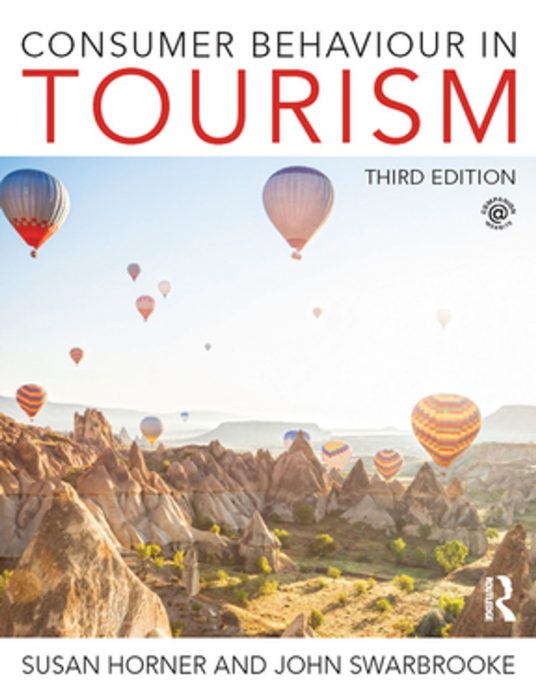
3. Sustainable Tourism in Island Destinations, by Sonya Graci and Rachel Dodds
Building on existing literature on the topic, this book offers creative discussions and realistic management frameworks through the use of various island design works outlined by the authors. Most of the world’s islands depend on tourism as their principal source of income. For long-term sustainability it is therefore imperative that such destinations are handled. The natural beauty of a destination is usually one of its key tourism-related properties, but the natural environment is perhaps the resource most directly affected by possible overexploitation.
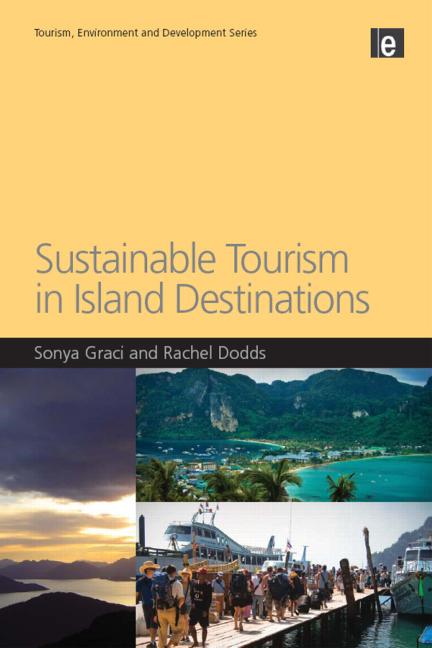
4. Overbooked: The Exploding Business of Travel and Tourism, by Elizabeth Becker
This book explains that excess reservations are a reality of the economy of tourism, and how it impacts various countries. Each chapter is grouped according to a theme and a given country is highlighted as a case study within each theme. The outcome is an easy-to-read book that doesn’t appear to be packed with too much detail.
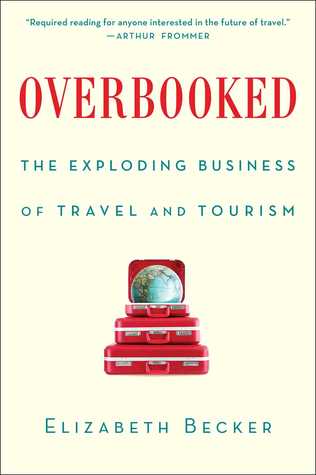
5. Taking Responsibility for Tourism, by Harold Goodwin
Goodwin’s book is about the vitally significant global need for sustainable tourism. To those who plan to travel, and for those who consume, this is an incredibly significant obstacle. This is the most comprehensive contemporary analysis of the key issues crucial to the advancement of responsible tourism and has been written by one of the leading thinkers responsible for reforms in the sector. It extends the wider definition of travel and tourism obligation and analyzes how it relates to sustainable business and transparency business case.
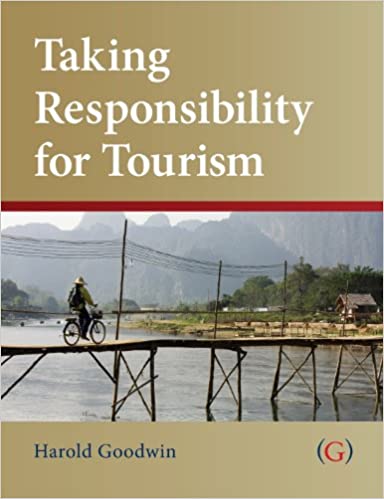
If, on the one hand, predatory tourism can lead to the depletion of natural resources, as well as cultural de-characterization and social imbalance, sustainable tourism is composed of the same pillars of sustainable development: economic efficiency, social justice and ecological prudence.
In addition, sustainable tourism aims to strengthen tourism activity in the long term, based on environmental and cultural preservation that qualifies the tourist destination , generating permanent social benefits .
It is up to us, as travelers, businessmen, leaders or authorities, to think about how we can promote tourism that contributes to the well-being , quality of life and appreciation of the culture of the communities, environmental balance and preservation and the economic sustainability of both small and big entrepreneurs.
Cover image: Photo by Ben White on Unsplash

You might also like

4 Eco Trends of Tourism
How will be the tourism in the future? According to a recent report, more travelers will choose sustainability. Here are the 4 main eco trends! How will be the tourism in the future? Will we travel on spaceships visiting faraway planets or will we finally take care of the safeguard of our Planet? According to […]

7 giants that earn billions of dollars thanks to the global tourism
As air routes and the use of the internet increase, from the 1900s onwards the tourism sector has experienced a general growth in its business. Nowadays, 7 multinationals are earning billions thanks to global tourism, which includes cruises, hotels, and air routes. This is an actual oligopolistic challenge between parts that are willing to attract […]

Circular Economy and Tourism. The Ecobnb’s Guide
If you don’t know how Circular Economy and Tourism are related, find it out in the Ecobnb’s Guide. What’s about the Circular Economy? The Circular Economy, is an economic system that aims to reduce waste and to regenerate products and services. This innovative economic system is based on the philosophy of ‘Remake, Reuse, Recycle‘, so […]
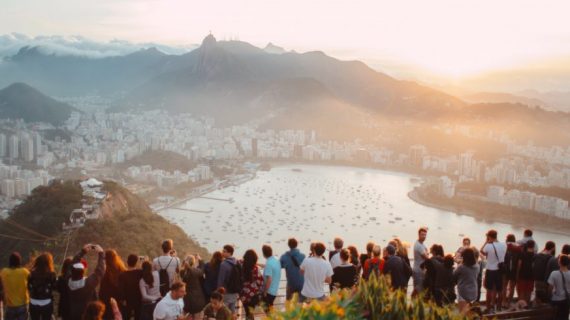
Overtourism: Causes, Consequences and Solutions
Overtourism: one of the words that people use most in recent years. In effect, more and more often, tourist destinations suffer from overtourism, tourism overcrowding. Places that everyone wants to see because they are “famous”. Movie scenes shot in locations (such as Lake Braies) that now attract hordes of tourists looking for a short trip. Simply, they […]
TheTravelBook
It is time to change. we want to prove that it is possible to change bad habits without compromising on either quality, luxury or great holiday experiences..

eco-friendly travelling & sustainable lifestyle
Explore denmark, get a book full of sustainable travel inspiration.
Staycation in Denmark contains more than 200 pages of recommendations with delicious environmentally certified accommodations, climate-friendly modes of transportation, and sustainable gourmet experiences in Denmark. The book is composed of beautiful mood pictures from our own trip around Denmark during the summer of 2019.
Staycation i Danmark
Rejseinspiration til staycation i danmark af thetravelbook, discover all the hidden gems in denmark.
By TheTravelBook
Several thousand people have voted on their favorite travel blog – and we won! We feel extremely lucky to have the most loyal supporters, and the fact that a travel blog with a focus on eco-friendly tourism was able to win this award – is simply just incredible!
Start exploring

From soft corn fields to inifinty roads through mountain landscape – Scandinavia has everything.

Experience the majestic nature landscapes of Europe.

Humid jungle feel and exotic fruit sprinkles. You know you are in an Asian paradise.
Most bought products
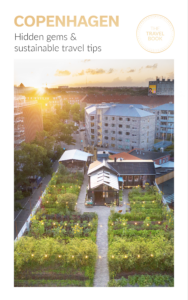
COPENHAGEN (Ebook)

Staycation i Danmark (e-book)

Poster of elephant keeper (incl. natural oak frame)

Poster of Henningsvær (incl. natural oak frame)

Poster of women in a jungle, Vietnam (incl. natural oak frame)

Poster of Kistefos (incl. natural oak frame)

Poster of Berlin by night (incl. natural oak frame)

Poster of The Twist (incl. natural oak frame)
Explore by interest.

Most read blog post
Do you need travel inspiration, get inspiration to visit unique destinations and experience culinary sensations., we are proud to have collaborated with.

Now it’s time to change
– and we want to prove that it’s possible to change bad habits without compromising on either quality, luxury, or great holiday experiences.
Read more about our mission.
Get inspiration for your next adventure
Do like more than 30k others and follow our eco-friendly travels on instagram.

Subscribe to our newsletter and get our latest blog posts and news.
Sustainable Travel Guide
Learn how to be more sustainable and reduce your travel-related carbon footprint. Based on the 2019 Greenhouse Gas Emissions Inventory , air travel accounted for 13% of UC Berkeley's total greenhouse gas emissions.
To support the university's Carbon Neutrality goals, we encourage all staff, faculty, and students to adopt sustainable travel practices. Please use this sustainable travel guide before booking and during your next trip.
Evaluate Your Trip
Assess your meeting to determine if travel is necessary. Many meetings can now be effectively conducted virtually. UC Berkeley utilizes some Video Conferencing solutions (for example, Zoom and Google Meet), which are available to all staff, faculty, and students.

Use Direct Bill and ConnexUC
Utilizing Direct Bill and ConnexUC to bill your airfare to UC Berkeley directly will save you time and money. The UC Travel Center (UCTC) and BCD Travel's Concur portals enable travelers to search and sort flight choices by emissions.
Instructions
Step 1. Once you input your flight search parameters, select 'Emissions' from the 'Sorted By' drop-down menu

Step 2. Click 'View Fares' to expand any flight selection

Step 3. Click on 'Flight Details' to expand any selection

Step 4. Note the pounds of CO2 emissions in the flight information sections

Book Direct Flights
Choosing to fly non-stop eliminates half of a single flight’s emissions as you are avoiding extra landings, takeoffs, and taxi times.
Use a UC Travel Partner
Utilize a UC Travel partner (UCTC or BCD) for complex or multi-leg trips. Full-service agents are experts at identifying routes and airports that will work best for your trip, cutting down on extra travel time and expense.
Fly Coach or Economy class
A World Bank study noted that the emissions associated with flying business class were about 3 times as great as flying coach. In business class and first-class, seats are larger, so fewer people are being moved by the same amount of fuel. In addition, the study estimated that a first-class seat could have a carbon footprint 9 times as great as an economy seat.
Use an Electronic Ticket
If possible, do not print your airline tickets, and use an e-ticket. With many passengers flying out of San Francisco International Airport and Oakland International Airport every day, that equates to thousands of single-use pieces of paper being discarded. Please utilize digital e-tickets on your Smartphone or digital device where applicable.
Carpool with Your Colleagues
When traveling with others, carpool to reduce the amount of fuel and carbon emissions.
Choose an Appropriate-Sized Vehicle
If you are not traveling with colleagues, consider a smaller vehicle.
Rent an Electric or Fuel-Efficient Car
When booking through ConnexUC, you can get access to all-electric or hybrid vehicles at participating locations that will meet UC Travel policy guidelines for reimbursement. Hertz has Teslas available at SFO, LAX, SJC, OAK, ATL, FLL, MIA, JFK, LGA, ORD and many other major airports. Hertz, as well as Dollar and Thrifty, also have hybrids available at select airports. Please keep in mind that supplies are limited, so the further in advance you book your reservation, the better chance you have of finding an ell-electric or hybrid vehicle available. Rental vehicles are only reimbursable when booking through the UC contract in ConnexUC.
- Hertz Electric Vehicles EV Quick Tips
Please use the following instructions to check if the location you are traveling to has an electric or hybrid vehicle available:
- Log in to ConnexUC
- Go to the Trip Search page
- Click the Car Search button
- Enter your travel dates and locations
- Click the Search button
- A list of vehicles that Hertz offers will be displayed
- Select a vehicle in the 'Intermediate Elite' category and with 'Electric power' in the description
- A list of vehicles that the selected rental car company offers will be displayed
- Select a vehicle in the 'Intermediate Car Hybrid' category

Intermediate Car Category
Any vehicle in the Intermediate Car category is within policy. As long as the vehicle is listed as Intermediate elite, it should be within policy and reimbursable, but it is always good to confirm this first with your funding approver and/or the travel department if there is any question. It is ok if the EV is slightly higher in cost daily than a gas powered intermediate class car, as you will be spending significantly less on electric charging when compared to gas expenses.
If the daily rate is significantly higher than other intermediate vehicles, please email us at [email protected] and we will confirm if it is within policy.
Take a Lyft or an Uber
Employees can expense rides by selecting their preferred payment method for trips, routing business ride receipts directly to their work inbox, and switching between personal and professional rides.
Public and Alternative Transportation
Take a train.
Taking a train can reduce your CO2 travel emissions by as much as 90% compared to a plane. The ConnexUC portal offers an Amtrak option where you can book business class.
Use Public Transportation and/or a Bike Share
Using public transportation can further cut down on business travel expenses and can reduce your CO2 travel emissions. When available, take advantage of bike-share programs. Check to see if your hotel offers free bike rentals.
Bay Area sustainable transportation options:
- AC Transit operates a fleet of hydrogen fuel cell buses
- BART is taking steps to make its fleet of light rail trains more sustainable
- AMTRAK reduced its greenhouse gas emissions by 20% from 2010 to 2019
- Caltrain : The Peninsula Corridor Electrification Project is currently converting Caltrain's diesel operations to an electric system
Airport Shuttle Service
Consider an airport shuttle service or public transportation to and from the airport both at home and your destination. Many locations offer great public transportation options and even free services. Consider whether a rental car is needed.
Walk When it is Convenient
Walking when you are traveling is a great way to see a new place up close, to get a little exercise, and to save on your business travel budget - all while reducing your carbon footprint.
Accommodations
Book leed-certified hotels.
Book hotels that are Green Seal or LEED-certified. Hotels with these designations integrate environmental considerations into their business practices to decrease their carbon footprint.
Please refer to the following links to search for LEED-certified green hotels:
- Green Hotels Association
All LEED-certified hotels will display their certification on their website. You can look for the LEED logo. Many of these sustainable hotels can be found in ConnexUC. UC partner brand Marriott has a large selection of LEED-certified hotels to choose from. Some hotels offer free bike rentals.

Conserve Energy
Turn off all lights and the air conditioning or heater when not in the room. As you would at home, conserve as much energy as you can when you are not occupying your hotel room.
Reuse Towels
Hang your towels after use. Many hotels encourage guests to reuse towels to reduce energy and water use of washing towels after the first or second use.
Avoid Using the Hotel's Laundry Service
Try to avoid using the hotel's laundry service. Many times, they wash guests' clothes separately, even if there are only a few items to clean.
Leave the Do Not Disturb Sign on the Door
Leave the Do Not Disturb sign on the door for the duration of your stay. This cuts down on chemical cleansing agents, electricity used in vacuuming, and the washing of bed linens.

Try Staying at Airbnbs or Similar Accommodations
Staying at an Airbnb (available via ConneUC) instead of a hotel can make it easier for you to recycle and compost. In addition, you can make your meals and conserve water.
Choose a Sustainable Restaurant when Dining
There are numerous restaurants to choose from that care about sustainability:
- Green Restaurant Association
- Ocean Friendly Restaurants (Surfrider Foundation)
Say No to the Plastic Bags and Straws at Restaurants
Plastic bags and straws account for a large percentage of plastic pollution in the environment due to their inability to be recycled. The US alone goes through over 500 million straws a day. That's enough straws to fill 127 school buses!
Eat Locally
By eating at local restaurants and street food places, you can avoid the use of plastic takeaway containers and utensils. Also, look for businesses that use locally-sourced and/or seasonal produce.
What to Pack to Support Zero Waste
- A reusable water bottle and/or travel coffee mug
- A reusable takeout container and cutlery set
- Reusable straws
- Reusable cloth napkins
- Reusable shopping bags
Please feel free to search online for other eco-friendly travel-related product ideas.

11 Top Sustainable Travel Companies That Support Eco-Friendly Tourism
These sustainable tourism companies give you endless ethical wanderlust.
Updated by Francesca Brooking
Edited & Fact Checked By Amber McDaniel
Updated September 7, 2023
We independently research all featured brands and products. To avoid waste, we test products on an as needed basis. This post contains affiliate links. If you buy something through our links, we may earn a small commission. Learn more about why we do this here .
We love to travel—but if you’re like us, the conflicting eco-anxieties and GHGs associated with globetrotting can cast a grey cloud over your grand adventure.
For a better way to see the world, discover our favorite sustainable travel companies that enrich not only your life, but the places you visit.
From conservation projects and off-grid lodges to all-inclusive safari tours, boutique hotels and bespoke luxury itineraries that really do help the local communities, the below eco-friendly tourism companies wear their green hearts on their sleeves.
Our Curated List Of The Best Eco Tour Companies For Responsible Roaming
How can the travel industry be sustainable.
It’s no secret that the tourism industry has its fair share of ethical and environmental issues.
Carbon and fuel-intensive flights, over tourism, exploitation, animal cruelty—the list goes on.
Not to mention tourism leakage, a process in which most of the money generated by tourism goes into the pockets of billion-dollar travel companies rather than into local communities that need it.
However, you don’t need to hang up your suitcase for good. If done responsibly, tourism can have a profoundly positive impact on both the traveler and the destinations they visit.
With the right planning or travel companies, sustainable travel supports livelihoods and funnels your money directly into the local economy.
It allows small businesses to flourish, funds community projects, and helps protect the environment by showcasing its economic value if left intact.
To us, the environment is already priceless, but what we mean here is that sustainable tourism (whether solo or with the assistance of eco travel agents and tour operators) can help conserve the natural world by preventing it from being turned into farmland or apartment buildings!
While tourism still has a long way to go, sustainable travel companies are pioneering positive change in the industry.
From employing local guides to offering flight-free holidays and measuring their environmental and cultural impact, these tour operators make sure they benefit every destination they facilitate trips to.
Keep reading to find our top recommended environmentally conscious trips and jump to the bottom to learn what we consider when planning a trip with eco-tourism and sustainable travel in mind.
11 Eco-Friendly Tourism Companies To Book Your Vacation With
1. responsible travel.
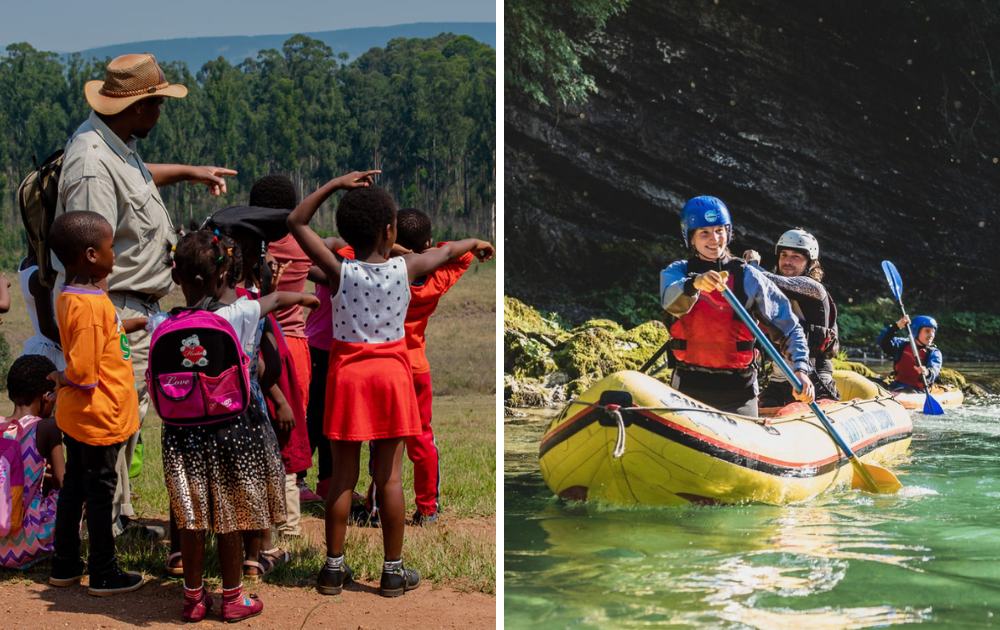
The clue is in the name with Responsible Travel . They’ve led the way in eco-friendly vacations and ecotourism tours since the turn of the century.
This eco travel agency has over 5,000 adventures on offer to destinations all over the world.
Choose from hiking, conservation, diving, kayaking, cycling tours or head off to track snow leopards, swim with the whales or cruise Antarctica.
Responsible Travel has a give-back program, which campaigns for positive change with NGOs and activists.
Its eco travel options focus on local culture and local people, making sure your money goes to independent businesses and supports animal conservation.
You won’t find any elephant rides or exploitative practices here. In fact, they’re an excellent resource for learning about the difference between ethical and unethical wildlife experiences.
2. &Beyond
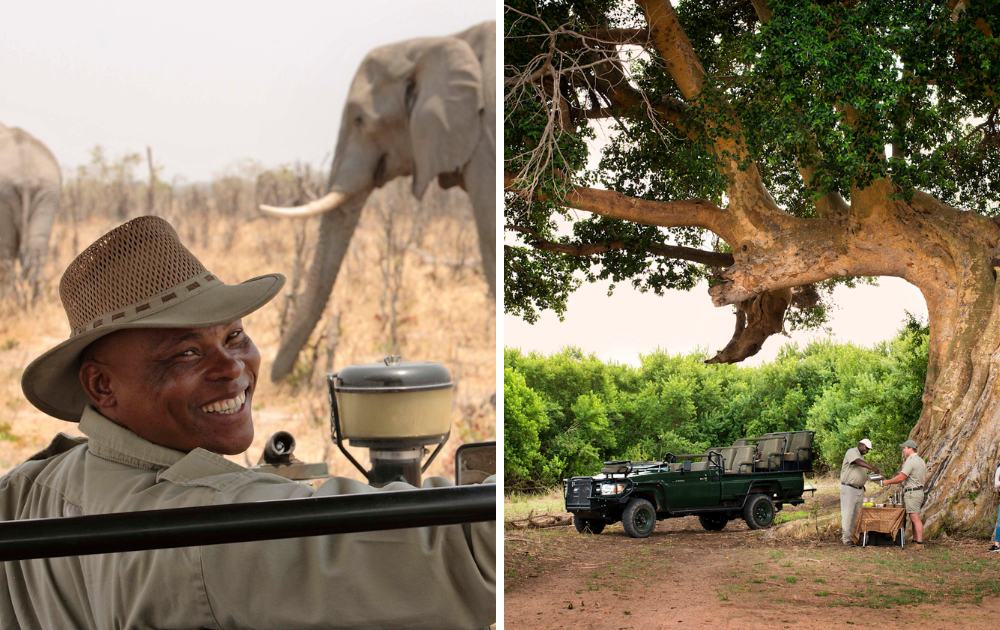
One of the top eco-friendly travel companies for luxury safaris, &Beyond goes above and beyond investing back into the local environment. They focus on small-group and tailor-made tours in Africa, Asia, South America, and the Indian Ocean.
If you’re keen to tick off the Big Five (lion, leopard, buffalo, elephant and rhino), you have plenty of ethical choices with their range of responsible luxury safaris in 11 African countries with 29 camps and lodges that all employ local guides.
Search for wildlife on the Serengeti, track the great migration, explore Masai Mara national park or glide in a hot air balloon over the Namib Desert.
One example is their Xaranna Okavango Delta Camp in Botswana which has a state-of-the-art Tesla solar power plant that gives them 80% of their energy.
They also have a responsible travel policy which looks after the land, people and animals. Environmental projects in Botswana include rhino conservation, supporting local isolated communities and providing them with access to safe drinking water.
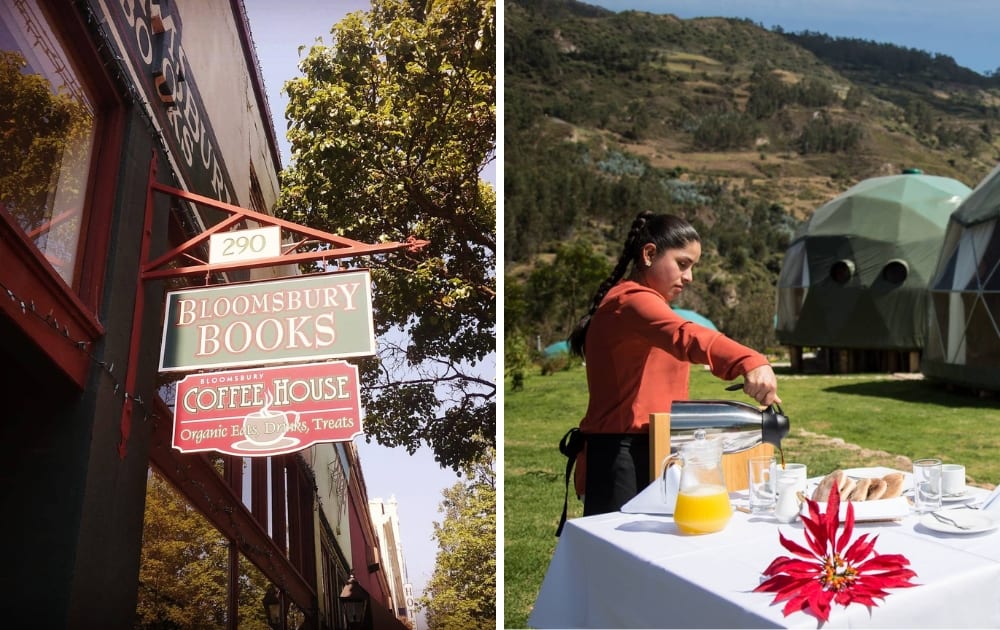
Kynder cuts to the chase.
This eco-travel platform brings together the best hotels, cafés, bars and restaurants in Europe and the USA that are eco-friendly, humane, kind and community loving.
We’re talking kind to the planet, to staff, their locality and kind to you, too.
Find the off-the-beaten-track places that make your sustainable trip, from coffee shops hiring only refugees to the coolest eco hotels and holistic retreats.
All hotels and hospitality establishments must pass a rigorous set of guidelines to be accepted onto their platform.
That way, you can be confident that these small businesses are truly genuine. No greenwashing here.
4. Undiscovered Mountains
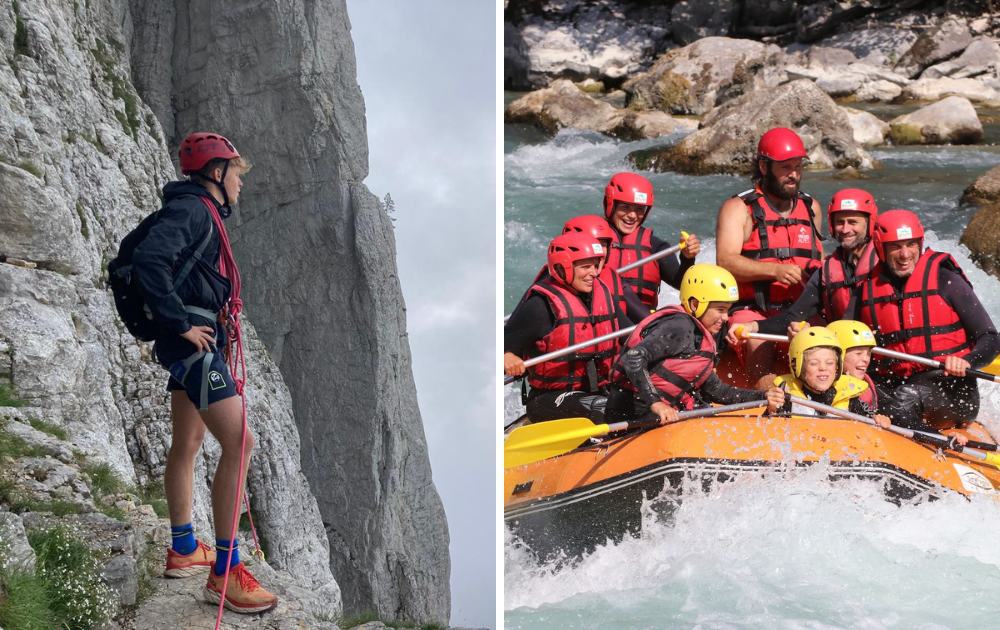
Undiscovered Mountains is one of the top travel companies for sustainable tourism in the French Alps.
From skiing and snow-touring to building an igloo in winter to mountain biking, rock climbing and cycling in the summer, it’s all here.
It’s possible to do horse riding, wildlife holidays, walks, kayaking and fishing holidays. Any active, outdoor adventure holiday you can think of, you will most likely find it.
It has special packages for families and singles, so you can guarantee you’re always paying a fair price.
Plus, Undiscovered Mountains only works with local guides, independent accommodation and responsible partners.
Rest assured, all your hard-earned cash goes to the people who deserve it and those who help protect this stunning European mountain range.
5. Adventure Alternative
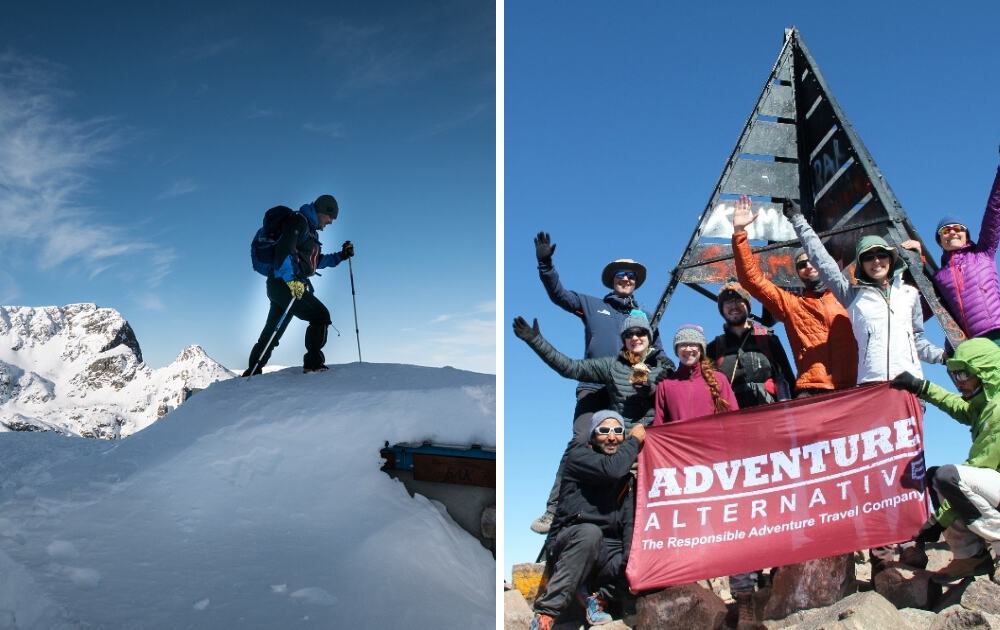
Among sustainable travel companies, UK-based Adventure Alternative is calling other mountain enthusiasts with sights set on remote, rugged adventures worldwide.
This responsible travel tour operator is based in Ireland but takes intrepid souls all over the world, from Borneo to East Africa. This is the company for you if you’re interested in climbing Mount Kilimanjaro or making the trek to Everest Base Camp.
For slightly more laid-back trips, there are also wildlife tours and safaris.
As well as hiking and trekking, Adventure Alternative is a member of Fair Trade Volunteering.
The sustainable travel company runs volunteering trips through Moving Mountains in various countries across the globe, which makes sure each project is needed and useful.
They also invest heavily in their whole supply chain, from local guides to community projects, and they works to a framework set by sustainable travel principles.
6. Intrepid Travel
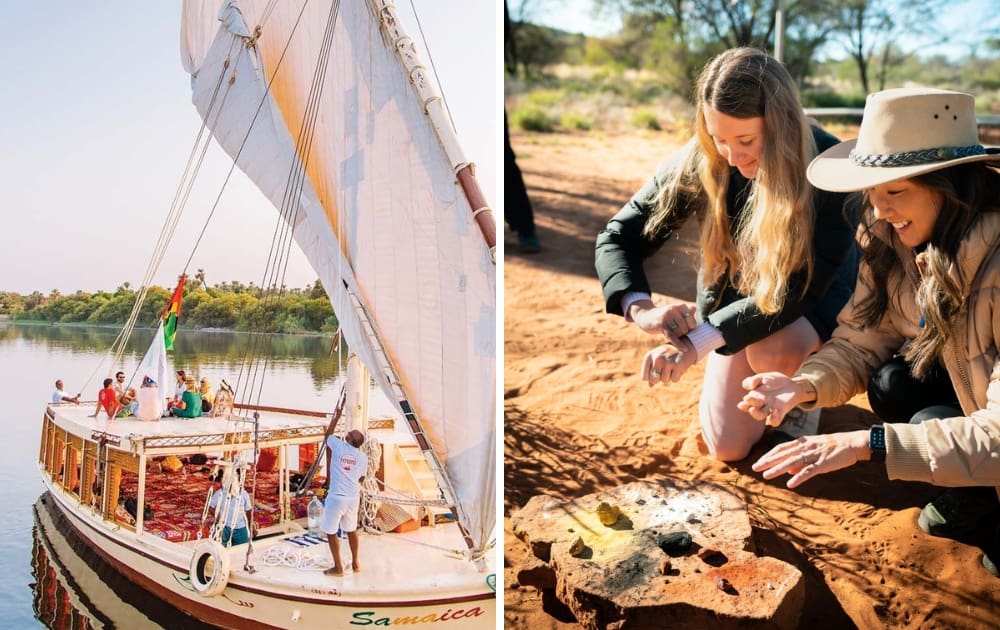
While Intrepid Travel has been around for years, the eco-tourism operator is no slow coach when it comes to slow and sustainable trips.
They’re not just a Certified B Corp , but the largest travel company in the world to become one.
They pride themselves on incorporating the principles of sustainable development in the way they provide travelers with authentic and real-life experiences.
Simply put, these are small group trips all over the world, from Greenland to Oman that get you up close and personal with wildlife and cultural highlights with local guides and specialist experts.
You can book cycling, sailing or wildlife trips with them, too. There are family-friendly tours, expedition cruises, women’s expeditions, tailor-made itineraries, National Geographic expeditions and budget-conscious tours for those aged 18-29.
Whatever your travel style, you’ll find your perfect eco travel experience.
The Intrepid Foundation also supports 50 community and conservation projects all over the world. Plus, they cover all administration costs so 100% of your donation goes directly to the project of your choosing.
7. Kind Traveler
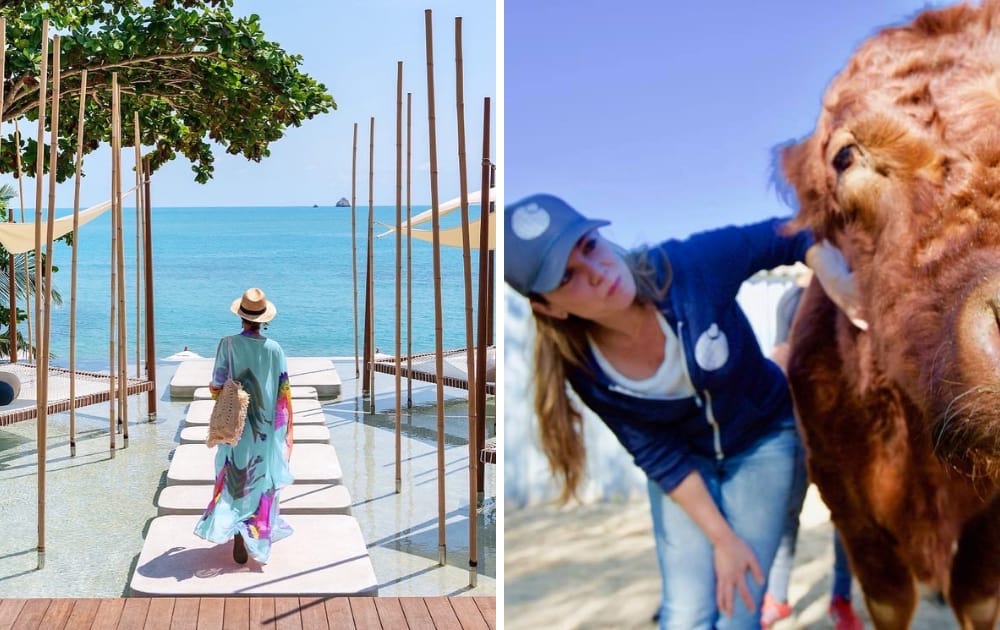
Kind Traveler is a socially conscious ‘Give + Get’ hotel booking platform that empowers travellers to be a force for good.
$10 goes to a local community or charity close to where you’re staying, and you’ll unlock an exclusive rate at that hotel or destination across the US and beyond.
Kind Traveler is one of a growing number of eco travel companies that want to harness the power of routine bookings we already make and use them to benefit the planet. It’s a simple yet effective way to give back when booking your trip.
An example of one of the best traveler companies that have implemented sustainable tourism policies, Kind Traveler’s goals are aligned with the United Nations’ Sustainable Development Goals (SDGs): preventing poverty and hunger, protecting the planet, and promoting well-being for individuals and animals.
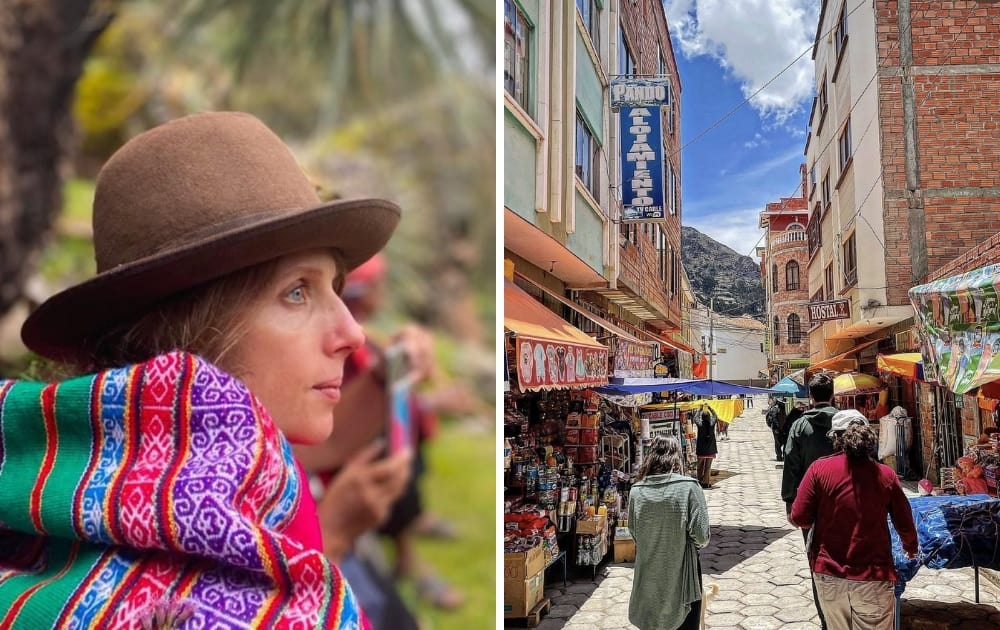
One of the top sustainable travel companies South America -bound travelers have, Aracari organizes eco-luxury holidays and boutique trips around Peru, Brazil, Argentina, Chile, Colombia, and Ecuador—including the Galapagos Islands.
In recognition of their ethical efforts, sustainable brand consultants Positive Luxury has awarded the tour operator the prestigious Butterfly Mark.
They’re also a favorite with Conde Nast Traveller, and their specialist guides are some of the best in the business.
They infuse all of their tours with environmental and social good, foster long-term relationships with local communities, help you reduce your environmental footprint, and ensure everyone gets paid a living wage.
Really experience Latin American culture with authentic homestays on Lake Titicaca or get access to exclusive local accommodation from Aracari’s black book of contacts that no one else has.
For a more hands-on experience, spend time with community projects like Tierra de los Yachaqs, a philanthropic organization determined to preserve the history and traditions of local people in Peru’s Sacred Valley.
9. Rickshaw Travel
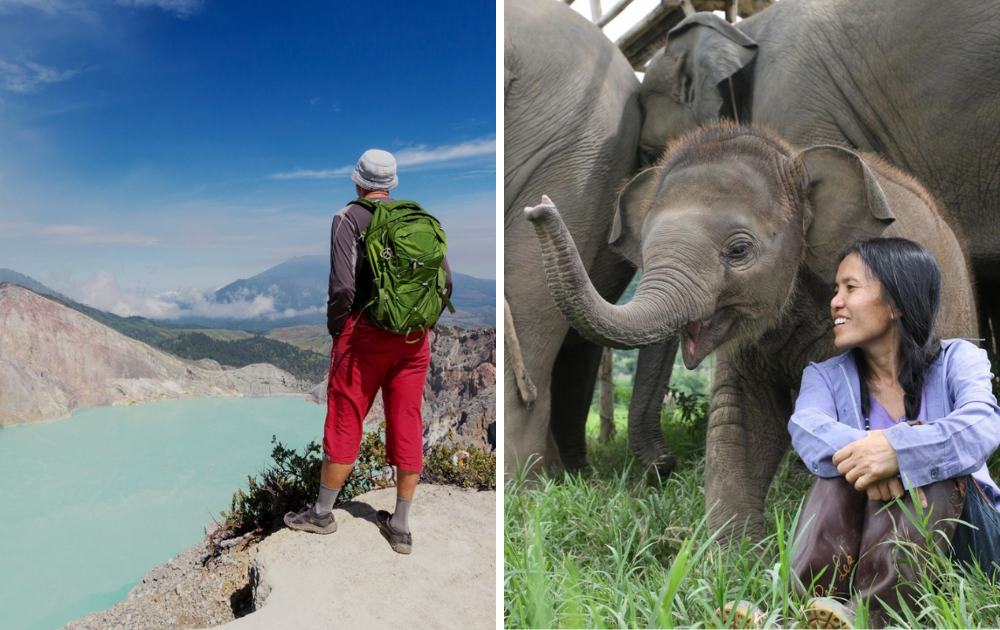
Rickshaw Travel has a whole host of independent and authentic trips that get under the skin of Southeast Asia.
Explore Cambodia, Laos, Indonesia, Vietnam, and Thailand with their ethical and impactful itineraries.
The global sustainable tour operator also offers trips to India, Japan, China, and Bhutan as well as destinations in Central and South America plus Europe and North America.
This company is all about meaningful travel experiences, meeting people and discovering unique local cultures and customs.
Choose to go trekking, discover landscapes by bike, tuck into amazing street food and meet the people that make an eco-travel trip an unforgettable experience.
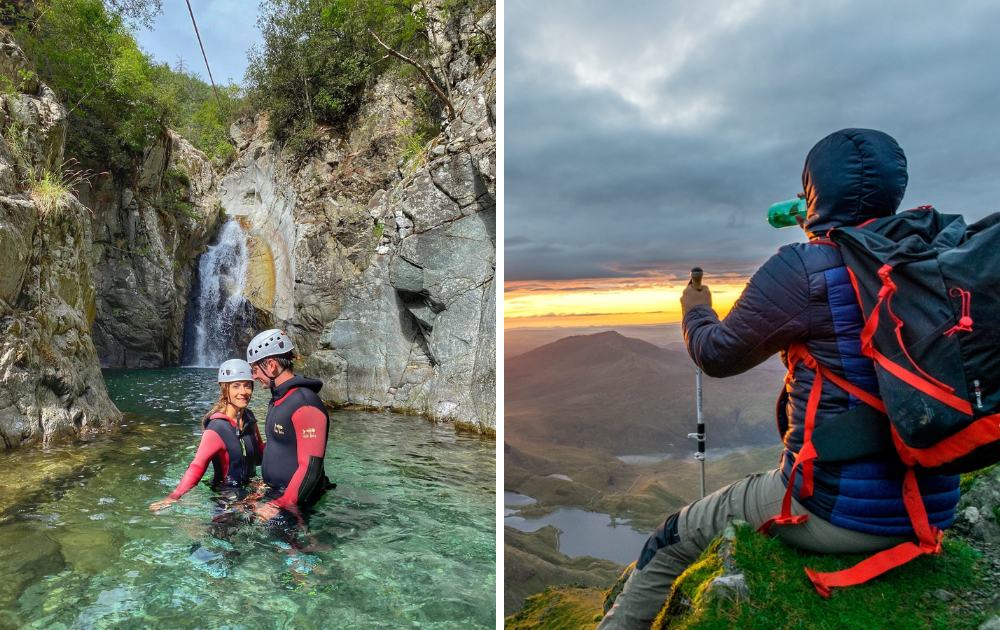
Head out on a flight-free holiday with slow travel experts Byway .
This eco-friendly tour company arranges slow travel adventures across the UK and Europe by train, bike, ferry and foot – no planes in sight here.
Their dynamic trip builder creates personal trips and tours based on your interests, while your virtual guide can assist with your journey via WhatsApp.
Byway manages all your itinerary and bookings and comes up with the perfect sustainable tours for solo, couple, or family travelers.
We love their commitment to authentic travel without the carbon footprint of flying.
All your accommodation is locally owned, too. Think: family-owned B&Bs and boutique hotels, all with the utmost comfort—and of course, fabulous breakfasts!
11. Earth Changers
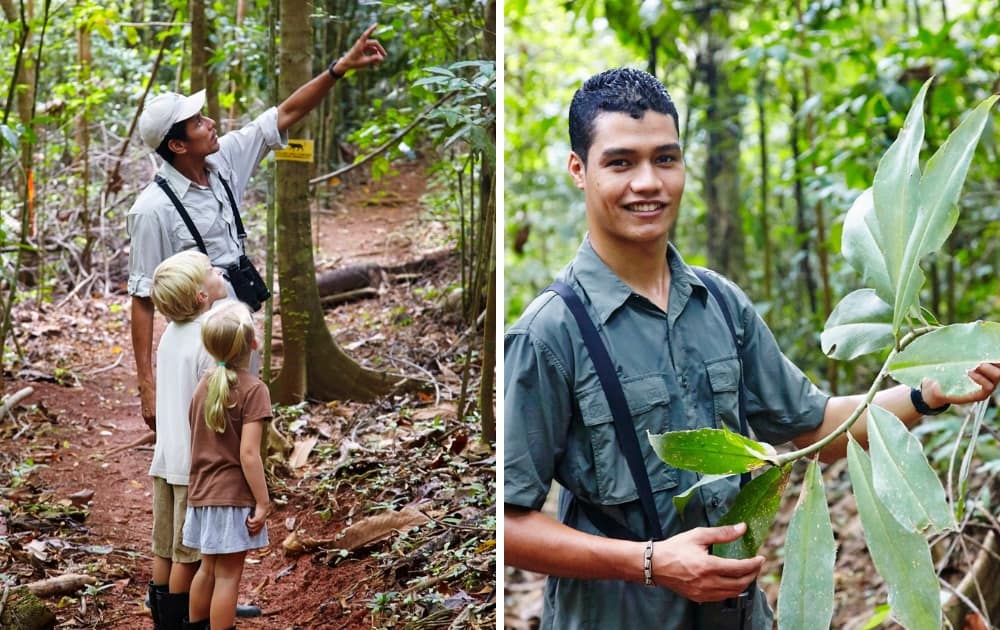
Inspirational, transformative tourism is what’s on offer at Earth Changers , an online travel booking platform which features a list of environmental holidays whether it’s adventure, active breaks, or conservation trips.
At the moment there are ten destinations which include the first-ever marine conservation reserve in Tanzania to Floreana, which is the smallest of the inhabited islands in the Galapagos archipelago.
You don’t have to book far-flung destinations either. Join an authentic mountain ranch in Croatia or do an adventure trip in Wales much closer to home.
Earth Changers is a global eco-tourism project that truly has a positive impact, and you’ll get to meet world-changing pioneers along the way.
How Did We Choose The Top Eco-Tourism Companies?
Eco-tourism and sustainable travel are often used interchangeably.
So what is an eco-tourism company? And how does it differ from a sustainable travel company?
An eco-tourism operator tends to focus on low-impact, nature-based tours that conserve the environment through culture and education.
Think gorilla trekking in Rwanda with Intrepid Travel, staying in an eco-lodge with Aracari or booking a conservation holiday with Earth Changers.
Sustainable tourism is the umbrella term for eco-friendly travel. It’s based on the three pillars of sustainability: economic impact, sociocultural impact and environmental impact.
The idea is that travelers have the option to choose sustainable practices in all aspects of their trip. Kind Traveler’s hotel booking platform and Kynder are perfect examples of this.
Let’s explore some of our essential criteria for evaluating each sustainable travel company.
Carbon Goals & Achievements:
A truly eco travel company should prioritize carbon footprint reduction by offering flight-free alternatives, promoting train, bike, and ferry travel over flights.
If flights are part of the experience,they should be utilizing some of the best carbon offset programs to counteract the carbon footprint of those flights.
Sustainable Accommodations:
We want to explore with sustainable travel companies that curate experiences with eco-friendly hotels and restaurants, guaranteeing that your stay supports businesses that are kind to the planet and their communities.
Diversity, Equity & Inclusion:
Respect for cultures being visited is an obvious essential, sustainable travel or not, but we also want companies that support local communities with meaningful cultural exchanges, fair employment of local guides, and additional investment in economic development in destination regions.
In other words, your money should be mostly staying in the community you’re visiting.
Pay It Forward:
We love to see charitable initiatives that give back to these communities in additional ways, such as supporting local conservation and social programs.
Closing Thoughts On Sustainable Tourism Companies
As you can see, eco-tourism and sustainable travel work towards creating an industry that gives back, uplifts local communities and protects fragile environments.
They also provide you with much more authentic and rewarding travel experiences.
Have a green travel lover in your life?
Share this list of the top eco tour companies and spark their eco-friendly wanderlust.
Subscribe to the pebble mag Newsletter
Get weekly insights, guides and news to support our collective transition to a better, more sustainable future.
More from pebblemag...

Recycling Statistics: The UK Recycling Rate Of Plastic Is Just 17%
By Francesca Brooking

DIY Coffee Scrub: A Homemade How-To For Turning Used Coffee Grounds Into Smooth Skin
By Georgina Wilson Powell
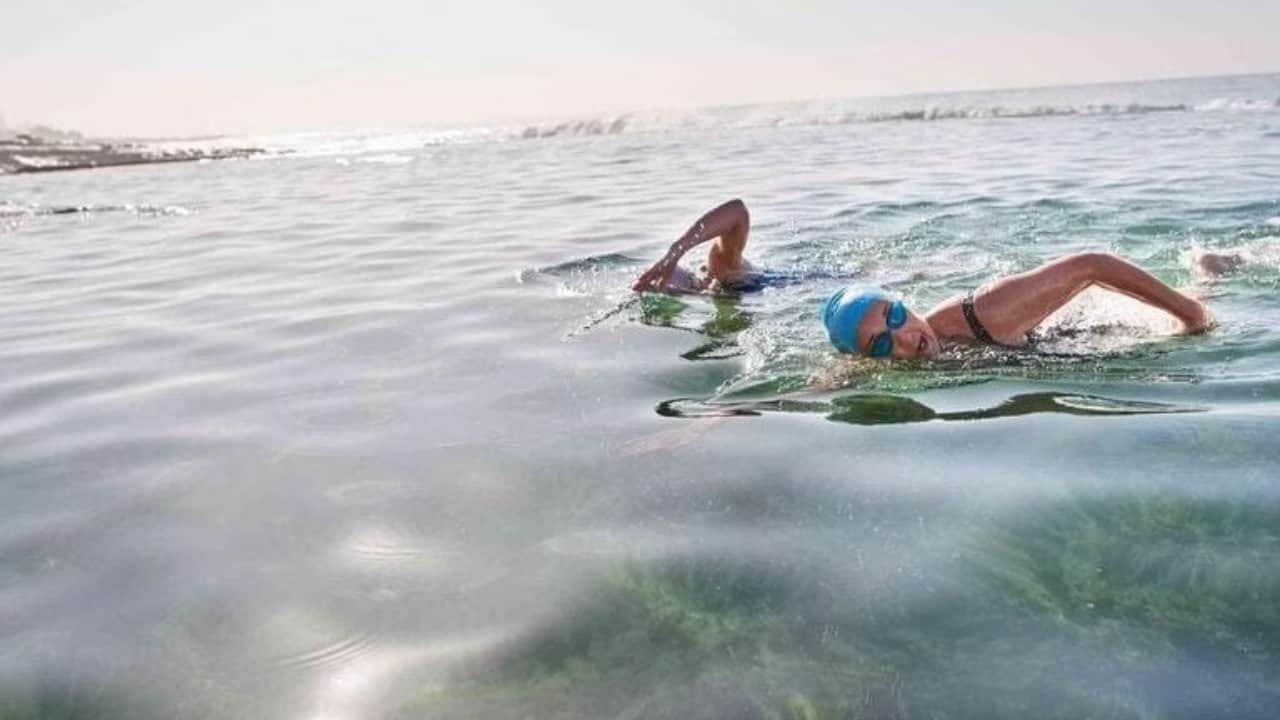
7 Best Swimsuits For Wild Swimming That Save The Oceans

9 Sustainable Activewear Brands To Break A Sweat With

13 Buy It For Life Products That Last Forever In Your Home

7 Refillable Cleaning Products For A Plastic-Free Shine
By Jenny Bell

Wet Cleaning Vs Dry Cleaning: 7 Reasons To Choose Wet

7 Ethical Banks In The UK That Invest In Our Collective Future
By Tenielle Jordison

pebble magazine is a member of the Sustainable Jungle Network and a member of One Percent For The Planet. Learn more here .

pebble magazine acknowledges the Bunurong / BoonWurrung people as the Traditional Owners of this country, pays tribute to all Aboriginal and Torres Strait Islander people in this land, and gives respect to the Elders past, present and emerging.
© 2024 pebble magazine | All rights reserved
More From Forbes
These sustainable safari lodges are among the world’s best luxury camps.
- Share to Facebook
- Share to Twitter
- Share to Linkedin
The new Sitatunga Private Island Camp is just as it sounds, a top-tier luxury boutique safari camp ... [+] on a private island in Botswana's Okavango Delta.
If you could take a truly great, once-in-a-lifetime type vacation that was also greener and more sustainable without making any sacrifices in terms of quality, why wouldn’t you? In the case of African wildlife safaris, you don’t just skip sacrifices, you get what just may be the very best product available. Period. Even better is that this dream trip comes in a range of price points, from ultra-luxe to more affordable.
Sustainability has become a hot trend in travel, with numerous surveys confirming its importance in travel planning among consumers. For instance, the most recent annual edition of the large (31,000 travelers in 34 countries) global survey by travel website Booking.com shows that 83% of travelers see sustainable travel as “important,” with 75% planning to travel more sustainably in the next year. The prestigious American Express Trendex Consumer Trends report 2024 edition found that 54% of respondents listed “Booking accommodations that prioritize sustainability” as a top travel priority.
Well, if you want to book sustainability focused accommodations, you can’t do much better than the safari camps of Great Plains Conservation .
You never know who is going to join you for lunch at one of the Great Plains Camps, like this ... [+] elepahnt stopping by Zarafa Camp's main deck.
One of the biggest problems with the green travel trend is information and misinformation. Jus as resorts add a yoga class and claim to be wellness vacations, hotels and resorts often “greenwash” their practices and claim sustainability through long established hospitality industry practices such as offering you the chance not to have them wash your sheets and towels or putting larger reusable shampoo dispensers in. With dozens of competing “certifying” bodies, some of them self-serving or selling endorsements, and no Forbes 4 and 5-Star equivalent seal of approval for sustainability, it can be very hard for consumers to separate the truly green from the hangers on. You have to look at every property in a deeper dive and drill down on the details, and I’ve done that in this case. Great Plains Conservation is the real deal.
Best High-Yield Savings Accounts Of 2024
Best 5% interest savings accounts of 2024.
It's also one of the very best, period, proving that you don’t have to make sacrifices to do good. I’ve traveled many times on safaris to Africa, visiting eight different countries and almost all of the best-known luxury safari lodge brands. There are a lot of exceptional high-end safari camps and lodges, but even in this elite field Great Plains stand out.
Not exactly roughing it-this is one of just four suites at Zarafa Camp.
If you have the National Geographic Channel , or like me, grew up with their documentaries on network television, you probably already know the force behind Great Plains, Derek and Beverly Joubert. He is a legendary nature filmmaker, perhaps the greatest ever, and she is an acclaimed wildlife photographer. They have co-produced more than 40 films for National Geographic, where they are both explorers-in-residence, including one of the most popular wildlife films ever released, Eternal Enemies: Lions and Hyenas, which has been watched by an estimated one billion viewers around the world. It won an Emmy and was filmed at the Great Plains property in Botswana (many of the films were made at their camps). They have also won eight other Emmys (and 23 nominations), a Peabody, a Presidential Order of Merit, and the World Ecology Award. They’ve authored more than a dozen books, and in partnership with National Geographic, founded the Big Cats Initiative and Rhinos Without Borders.
But the biggie is Great Plains Conservation , which they co-founded in 2006. The group works with local governments and communities to protect the environment and its wildlife through low-density, environmentally responsible tourism. As explained below, they take “low density” extremely seriously. Revenue from the 18 camps, suites and lodges in Botswana, Kenya and Zimbabwe has helped protect more than 1 million acres of wild lands in Africa.
Soaking tubs, champagne and views are all part of the day to day experience on these safaris. This ... [+] is Duba Plains Camp.
The Great Plains model has been to find areas that are under threat and stress, secure landscapes large enough to protect its wildlife populations, and go through the required processes to change the status of the land to protected areas that still offer economic benefits. They have successfully transformed former agricultural or hunting land to wildlife conservation, with an emphasis on photographic tourism. Camps are small and built ultra- sustainability, designed so that they can be removed and leave virtually no trace. No new wood is cut, they build foundations out of reclaimed railroad ties, buildings are almost exclusively recycled hardwoods and canvas, they have state of the art solar farms, green water purification systems, waste treatment systems, even a biogas process that converts vegetable waste into cooking gas. In their newer projects they have managed to almost completely eliminate the use of plastics across the board.
But true sustainability is not just about power and recycling. What Great Plains Conservation does so well is to protect and enhance the environment it lives in, and their initiatives have greatly improved the populations and security of wildlife, especially threatened species such as rhinos and African wild dogs. This in turn benefits their customers—I’ve been on dozens of game drives but never had the kind of over-the-top African wild dog sighting I had this spring in Botswana, and that’s because they helped that species survive. Because of insane poaching, it has become hard to see rhinos at all in many of their traditional African habitats, but in the Okavango Delta of Botswana, the private concessions of Great Plains are some of the most protected habitats on earth. Sustainability is also about the locals, and the Great Plains Foundation is their U.S. based 501c3 charitable arm that backs land protection, conservation programs and community programs including childhood education and rural solar power projects in Africa.
But the real highlight is wildlife, and these camps have some of the best viewing anywhere. There is ... [+] likley no better chance to see rare African Wild Dogs than in the private Selinda Reserve.
Frankly, if you go on any luxury safari to Africa you are going to have a very good time, you cannot miss, and I think it’s the epitome of the “Bucket List” vacation, the definition of (at least) once in a lifetime. But it’s even better if in addition to having a very good experience, you feel very good about it, and that’s what Great Plains adds to the mix. These lodges are feel good places, if not feel great places.
I was first introduced to Great Plains a decade ago by Dennis Pinto, Managing Director of Micato Safaris and a good friend (and conservation collaborator) of the Jouberts. New York, Nairobi and Cape Town-based Micato is the gold standard in the safari world, the best tour operator specializing in the field, and I don’t say that lightly, because there are a lot of good ones. Micato is not just the best safari company I have worked with; they are the best tour operator in any form of travel that I have seen in more than 30 years covering the industry.
Everyoe who goes on safari wants to see leopard, and it's hard, but at Great Plains it happens ... [+] pretty regularly.
They are the only 10-time winner of Travel + Leisure Magazine’s World’s Best Award—in any sector. Winning #1 World’s Best Safari Outfitter ten times is simply unprecedented, but having traveled with them several times, I totally understand why. They turn every customer into a VIP who can completely stop thinking and start enjoying while on vacation, and have insider access to individuals and experiences no one else can match. They’ve also won just about every other big award there is, including the sustainably focused World Savers Award from Conde Nast Traveler—five times—the World Tours Award presented by the New York Times , Best Outfitters on Earth from National Geographic Traveler and 50 Tours of a Lifetime from National Geographic Adventure . Micato Safaris is a luxury experience for sure, but I have told every friend who has ever asked me for safari advice the same thing: “If you can afford to do a luxury safari, you cannot afford to not use Micato.”
When it comes to these trips, the devil is in the details, and no one has those details—and VIP insider access—wired better. If you don’t want the best room and the best guide at your camp when you arrive, if you prefer not to use the diplomatic line to get out of the airport, and if you are comfortable sitting on a dirt runway in the middle of the bush waiting for your propellor plane with no back up plan if it doesn’t show, than you don’t need this kind of help. But most people who go on safari do, even if they are booking these amazing Great Plains Lodges, because lodge companies do one thing very well, operate lodges, but there are a lot of other moving parts, like the arrival and departure stays stay in Nairobi, Dar es Salaam, Johannesburg or Cape Town, pre and post safari extensions such as Victoria Fallas, Zanzibar or gorilla trekking, and the actual process of getting to the safari lodges and their off the grid airstrips. If you use a good travel agent or advisor (and you should) they can take care of this for you—but chances are good that they are just calling Micato (and maybe marking it up).
Botswana's stunning Okavango Delta is one of the very best safari destinations on earth.
So, when Dennis Pinto told me “You need to go check out what Great Plains is doing in Botswana,” I took it seriously, especially since Micato sells all the other top brands (Singita, One & Only, Wilderness, etc.). I was so impressed by their flagship camp, Zarafa, that I named my dog after it. I cannot even imagine a higher level of endorsement than that. My Zarafa is eight now, and an everyday reminder of how awesome a trip can be. At that time, it was the best safari camp I’d been to, including a lot of heavy hitters. I just went back in May, and it is even better after renovations and improvements. In recent years there have been a lot of ultra-luxury safari lodges opening that wow with creature comforts, and some are even “fancier,” but few offer the same combination of quality and doing good. Plus, the guides are amazing, everyone wants to work for the Jouberts, and the private acreages are so vast that the wildlife viewing experiences, which at the end of the day is the reason why we go, are off the charts. There is a reason why National Geographic makes its movies and does photo shoots at these places—the animals.
In-room dining, Zarafa Camp-style. All the Great Plains Reserve camps are Relais & Chateaux members, ... [+] with a serious dedication to culinary experiences.
Zarafa Camp is part of Great Plains’ Reserve collection, its highest luxury tier, and all the Reserve-level properties are Relais & Chateaux members—the only ones in their respective countries. Relais & Chateaux is the oldest and most respected consortium of smaller independent properties with a luxury and culinary focus, and fine food is a requirement. This is something Great Plains delivers in spades across all its camps, which are all-inclusive with food, wine, spirits, amazing guides, first rate vehicles, and all activities except spa treatments and helicopter flights. The most unusual inclusion is the use of a very high-end camera and zoom lens setup for every room. This reflects the Joubert’s history as photographers, and just the giant lens on my camera would have cost me over $2,000—and I’d have to lug the heavy equipment around. Photos are a big part of doing an African safari, but I’d guesstimate that less than 1 in 20 visitors brings gear of this quality. At each camp they give you the loaner camera, help you use it, and then download all your photos to a thumb drive to take. I’ve been to a lot of safari lodges, and this is definitely not business as usual.
I also visited the latest property in the collection, the new and very unique Sitatunga Private Island, named for the rarest of all antelope species, which I saw here, from my tent deck, and nowhere else in all the countless times I have been on African game drives. There are many full-time rangers across Africa who have never seen a Sitatunga. The camp is on its own island in the middle of the Okavango Delta and just opened last July, and I was there this spring. It is the company’s only water-based Reserve-level camp, and all the activities (except heli-flight seeing) are by boat. Besides exploring the eco-system in boats, Sitatunga offers the rare opportunity to visit uninhabited islands and do ranger led game walks on foot among the full spectrum of African wildlife, but in a setting where they have not been habituated to human tourists, a really authentic—and potentially scary—experience. Sitatunga is not the place to go for a one-stop first-time safari, it should be tacked on to more conventional wildlife experiences with game viewing drives, but if you have been on safari before it is something totally new and different, and it can be coupled with the Selinda properties (see below) using a boat transfer.
The Selinda Camp is in the heart of the Okavango Delta, and you won't forget it.
Another thing the Great Plains lodges have in common is that they are small and very intimate but set on huge private reserves. Zarafa has just four suites, each of which holds one couple and spans about 1,100 square feet inside, plus extensive decks, infinity plunge pools and outdoor showers, as well as showers and copper soaking tubs inside. Each is also equipped with very high-end binoculars and all the creature comforts, including a fully stocked bar and mini-bar, all on the house. Many of the camps, including Zarafa, have actual gyms, despite holding no more than a dozen guests, and others, such as Sitatunga, add exercise bikes, yoga gear and weight equipment to each suite.
In addition, there is the Dhow Suite, so private and inclusive they market it as its own camp. The Dhow Suite is two-bedrooms and 2,600 square feet and set up as a self-contained safari lodge for up to four, with its own chef, butler, ranger, vehicle and wine cellar, so guests staying here do not have to use the common areas or interact with anyone else if they do not want to. But even if you include this unit, all of Zarafa camp never has more than 12 guests. There are now similar self-contained two-bedroom private chef suites at several of the Great Plains Reserve properties, including Selinda Camp and Duba Plains Camp in Botswana, Mara Nyika and Mara Plains in Kenya, and Tembo Pains in Zimbabwe.
"Sundowners," or sunset cocktails, are also taken seriously, and these camps are all-inclusive and ... [+] don't skimp.
The way Great Plains protected reserves are typically structured is that they are very large, with a handful of camps at different price points or dramatically different settings in different parts of each reserve. So, there are two luxury headliners in the 320,000-acre Selinda Reserve, Zarafa and its Dhow Suite, along with even smaller Selinda Camp, a luxury three-suite camp on par with Zarafa, and its private Selinda Suite. This camp sits on the Selinda Spillway, the main source of water feeding the Okavango Delta, the world’s largest inland delta and the main appeal of Botswana safaris. This unique and fascinating eco-system breathes life into much of Southern Africa and is the reason why Botswana typically has the very best game viewing in Africa. The Selinda Camp is in a very watery area, and while it has world-class conventional game drives, the Land Cruisers often ford rivers, and they have boating options as well. While Zarafa and Selinda are in the same huge reserve, they have such dramatically different settings that simply splitting your stay between them—within driving distance so no bush plane flight is needed for the transfer—is like going to two very different places, just easier.
Then there is the Selinda Explorers Camp, the opposite of the Dhow and Selinda Suites, the most affordable option here. But while it is less opulent and less pricey, it is no bigger, with just three regular tents and one 2-bedroom family tent. The “tents” are still very comfortable and have full bathrooms and showers, and instead of plunge pools there is a main common swimming pool at the camp. You are hardly roughing it, with exceptional food, beverages, and the full array of activities included, game drives, night drives, daytime guided bush walks, fishing, children’s activities and so on. All-inclusive rates begin at $1,105 per person nightly, which for this level of safari is a great value. Zarafa Camp begins at $1,935, though all the properties offer stay 3-nights and get one night free or stay 6-nights and get two free specials almost all the time, plus additional value-added packages and deals in shoulder and off-seasons, even throwing in things like helicopter transfers.
Bush lunches are one way safari lodges try to outdo each other, but at Sitatunga Private Island, you ... [+] do it by traditional watercraft.
Finally, there is the six-tent Okavango Explorers Camp, at the same level, so that even at the lower price point you can combine two distinct experiences within the same reserve. Zarafa and Selinda Camps are both over-the-top Relais & Chateaux Reserve-level camps, while the Explorer Camps are more “normal luxury.”
If you were counting, there are a total of 19 accommodations holding a maximum of 44 people, including the luxury suites, across four camps in an otherwise totally private 320,000-acre reserve—or nearly 7,300-acres per person. When you see a leopard or African Wild Dogs (very rare but this is one of the best places to see them), you might well be the only party at the viewing, unlike Africa’s mini-van jammed National Parks.
Selinda is one reserve, but in similar fashion, the Duba Plains reserve, also in Botswana, has the Reserve level 5-suite Duba Plains Camp, the one-party Duba Plains Suite, and the 5-tent Duba Explorers Camp, all within an 82,000-acre private reserve. It’s even lower density in Zimbabwe, where just the 10-person Reserve-level Relais & Chateaux Tembo Plains Camp and its sibling luxury suite occupy the private 290,000-acre Sapi Reserve, which is also a very important land restoration project and part of a UNESCO World Heritage Site. When the Jouberts describe their ethos as low-volume, low-impact tourism they are not kidding, with less than one visitor for every 20,000-acres of wilderness.
Yes, you will see a LOT of lions.
In Kenya, the private 70,000-acre Mara North Conservancy borders the public Maasai Mara National Reserve, essentially a National Park, so guests of the Great Plains property here, the Mara Expedition Camp (an Explorer-level property), can explore both the private acreage and the enormous public region. The all-new Mara Toto Tree Camp just opened here this month (July 2024), housing just eight guests in treehouse-style accommodations elevated in the tree canopy. The Relais & Chateaux Reserve-level Mara Nyika Camp is on a similar private reserve bordering the Maasai Mara, the 50,000-acre Naboisho Conservancy. Mara Plains Camp is another Reserve-level luxury property on its own 33,000-acre Olare Motorogi Conservancy, also abutting Maasai Mara. This property adds one of the self-contained ultra-luxury suites.
Ol Donyo is Great Plains “biggest” camp, a Relais & Chateaux Reserve-level luxury spot with eight suites and one “regular” two-bedroom suite, sleeping 20. It is the only lodging within a 274,000-acre private reserve between Tsavo and Amboseli National Parks and adds unique activities such as horseback rides and mountain biking.
Duba Plains Camp has an experiential kitchen where chefs make Michelin Star-style 7-course tatsing ... [+] menus in front of you.
They also have Mpala Jena Camp, a single party staffed home at Victoria Falls, the most desirable of the many post-safari extensions, and truly one of the wonders of the world. Stays can be easily coupled with safaris at the Zimbabwe camp.
The variety of camps and settings is amazing, but there is a continuity, a feeling you get at every Great Plains Camp, and when you leave one and arrive at another for the first time, you feel like a regular. The hardest decision most people make going on safari is whether to go to East Africa or Southern Africa, though if you have the time, you can do both. I can’t help you choose, it’s a close call, which is why you need to use an expert safari tour company, but in either region, you cannot go wrong with these camps.
The living area of a Reserve Camp suite.
To give you more detail, the following is from the Great Plains Conservation Mission Statement: “Our model takes stressed and threatened environments, surrounds them with compassionate protection and intelligent, sustainable management, and funds them with sensitive, low-volume, low-impact, tourism.
Communities are an intrinsic part of this model and benefit directly from it. The final piece of the puzzle is you – our clients and guests – who pay to visit the camps we create, and through doing so, become our valued partners and agents of positive change.
Most eco-tourism companies are primarily involved in the business of travel, occasionally getting involved in conservation initiatives to help sustain their tourism operations. But Great Plains is first and foremost a conservation organization that uses eco-tourism as a tool to sustain conservation programs.
We even coined a new name for what we do—'Conservation Tourism.’ We define it as the use of quality led tourism experiences that are environmentally sound, with the benefits going specifically into making the conservation of an area viable and sustainable.”
- Editorial Standards
- Reprints & Permissions
Join The Conversation
One Community. Many Voices. Create a free account to share your thoughts.
Forbes Community Guidelines
Our community is about connecting people through open and thoughtful conversations. We want our readers to share their views and exchange ideas and facts in a safe space.
In order to do so, please follow the posting rules in our site's Terms of Service. We've summarized some of those key rules below. Simply put, keep it civil.
Your post will be rejected if we notice that it seems to contain:
- False or intentionally out-of-context or misleading information
- Insults, profanity, incoherent, obscene or inflammatory language or threats of any kind
- Attacks on the identity of other commenters or the article's author
- Content that otherwise violates our site's terms.
User accounts will be blocked if we notice or believe that users are engaged in:
- Continuous attempts to re-post comments that have been previously moderated/rejected
- Racist, sexist, homophobic or other discriminatory comments
- Attempts or tactics that put the site security at risk
- Actions that otherwise violate our site's terms.
So, how can you be a power user?
- Stay on topic and share your insights
- Feel free to be clear and thoughtful to get your point across
- ‘Like’ or ‘Dislike’ to show your point of view.
- Protect your community.
- Use the report tool to alert us when someone breaks the rules.
Thanks for reading our community guidelines. Please read the full list of posting rules found in our site's Terms of Service.
2,600+ US flights canceled: United, American Airlines resume service after global outage
- A global IT outage caused delays and cancellations for air passengers around the world.
- Several U.S. carriers, including American Airlines, United Airlines, and Delta Air Lines, issued ground stops for all their flights early on Friday due to communication problems.
- The aviation sector is hit particularly hard due to its sensitivity to timings.
Get more news like this delivered to your inbox by signing up for our Travel newsletter here .
William Sikora III was supposed to fly from Philadelphia to Detroit on Friday morning.
“We are stuck at this airport,” he posted in a video on X at 6 a.m., zooming in on blue airport screens showing system errors. “United, Delta, America, all this stuff is down. People are just sitting here. The apps still say our flight’s on time because they can’t update information in the apps.”
Air passengers around the world faced delays, cancellations and problems checking in as airports and airlines were caught up in a massive IT outage that also affected industries ranging from banks to media companies.
Several U.S. carriers, including American Airlines, United Airlines, and Delta Air Lines, issued ground stops for all their flights early on Friday due to communication problems, according to the Federal Aviation Administration.
There were over 2,600 flights canceled and nearly 9,200 delays as of 5 p.m. ET, according to flight-tracking website FlightAware . Most airlines were able to resume operations as the morning progressed, but many said they expected disruptions to continue throughout the day.
More on the outage: Global tech outage grounds flights, hits banks and media businesses
Megan Brown said Washington Dulles Airport was surprisingly calm, even as the airline industry was in turmoil. She said the airport was less crowded than usual, making for a quicker-than-expected security screening, and passengers seemed understanding about the disruptions.
"We just took the gamble and came here, and hopefully we’ll leave today,” Brown told USA TODAY by phone from Dulles. “There’s nothing you can do.”
Her family's 8:25 a.m. ET flight to San Francisco was delayed, but they were able to take off within a couple of hours. "A cheer just erupted as the gate agent said we are going to start boarding," she said.
Around the world, airports and airlines advised customers to arrive earlier than normal for flights.
Around 9 a.m. Sikora posted another video showing fellow travelers sitting on the floor and standing in the middle of a crowded Philadelphia International Airport terminal.
“Everyone is in the same boat. Just wandering and sitting,” he told USA TODAY.
Issues online: Instagram may be the best social app to get your flight issues fixed. Here's why.
The cybersecurity firm Crowdstrike blamed the global tech outage on a defect in an update for Microsoft Windows hosts.
“Today was not a security or cyber incident. Our customers remain fully protected," Crowdstrike CEO George Kurtz posted on X . "We understand the gravity of the situation and are deeply sorry for the inconvenience and disruption. We are working with all impacted customers to ensure that systems are back up and they can deliver the services their customers are counting on. As noted earlier , the issue has been identified and a fix has been deployed. There was an issue with a Falcon content update for Windows Hosts."
The aviation sector was hit particularly hard due to its sensitivity to timings. Airlines rely on a closely coordinated schedule often run by air traffic control. Just one delay of a few minutes can throw off a flight schedule for take-offs and landings for an airport and airline for the rest of the day.
"The issue affected many separate systems, such as those used for calculating aircraft weight, checking in customers, and phone systems in our call centers," United Airlines said in a statement. "After pausing all departures overnight, flights resumed on Friday morning and we are working diligently to get our customers to their destinations."
Story continues below.
Are flights still grounded? How long will flight delays last?
"Ground stops and delays will be intermittent at various airports as the airlines work through residual technology issues," the FAA said, adding that it's working closely with airlines to resume normal operations.
Travelers are advised to contact their airlines and monitor the FAA's website for the latest information.
How to find the reason for flight delay
Customers can ask airlines why their flight is canceled or delayed, but the Department of Transportation confirmed that it considers the delays and cancellations caused by Friday's IT outage to be "controllable" by the airlines. While airlines may say they didn't cause the computer error, it means that the DOT will hold them responsible for upholding the commitments they've made to customers when it comes to policies like rebooking or hotel and meal vouchers as the mess gets sorted out. Every airline's policy is outlined on the DOT customer service dashboard.
The Bureau of Transportation Statistics also tracks causes of delays and cancellations.
Airline waivers
Airlines are doing what they can to provide extra flexibility to those affected by the outage.
- American issued a waiver for affected travelers covering all of its U.S. hubs.
- Delta issued a waiver allowing all passengers traveling Friday to rebook their flights.
- Frontier issued a waiver offering rebooking for travelers whose flights were delayed by more than 3 hours. Customers whose flights were canceled may opt for a refund or credit toward future travel.
- United issued a waiver for select airports so passengers can make changes if their flights are affected, though a United spokesperson told USA TODAY that nearly all of the airline's flights depart or arrive in one of the airports covered by the waiver.
- Spirit issued a waiver allowing customers who are booked to fly Friday or Saturday through any airport in its network to change their flights at no additional charge.
What happens if my flight is canceled?
Department of Transportation rules require all airlines to offer customers a refund if their flights are canceled for any reason, but customers may be entitled to additional compensation if a cancellation is within the airline's control.
What should I do if my flight is delayed?
If your flight is experiencing a long delay, the Transportation Department suggests asking airline staff if they will pay for meals or a hotel room.
The DOT dashboard reflects airlines' official policies, but many carriers handle compensation for delays on a case-by-case basis and may provide vouchers or other benefits in some situations that are not formally covered.
What is considered a significant flight delay?
Each airline defines significant delays differently, but the DOT's dashboard identifies which airlines provide compensation for controllable delays of 3 or more hours.
For instance, all major U.S. carriers are supposed to provide a meal voucher for flights delayed by at least 3 hours for reasons within their control. Additionally, Alaska, JetBlue and Southwest offer credit or a travel voucher when a controllable delay "results in passenger waiting for 3 hours or more from the scheduled departure time," according to the dashboard.
How to file compensation for a delayed flight
Travelers seeking monetary compensation for delayed flights should file a claim with their respective airlines. Passengers seeking other types of compensation, like frequent flyer miles, may be able to request those through the airline's customer service.
Contributing: Andrew Mills, Joanna Plucinska and Lisa Barrington ; Reuters
The Key Points at the top of this article were created with the assistance of Artificial Intelligence (AI) and reviewed by a journalist before publication. No other parts of the article were generated using AI. Learn more .
- Travel Planning Center
- Ticket Changes & Refunds
- Airline Partners
- Check-in & Security
- Delta Sky Club®
- Airport Maps & Locations
- Flight Deals
- Flight Schedules
- Destinations
- Onboard Experience
- Delta Cruises
- Delta Vacations
- Delta Car Rentals
- Delta Stays
- Onboard Wi-Fi
- Delta Trip Protection
- How to Earn Miles
- Ways to Redeem Miles
- Buy or Transfer Miles
- Travel with Miles
- SkyMiles Partners & Offers
- SkyMiles Award Deals
- SkyMiles Credit Cards
- SkyMiles Airline Partners
- SkyMiles Program Overview
- How to Get Medallion Status
- Benefits at Each Tier
- News & Updates
- Help Center
- Travel Planning FAQs
- Certificates & eCredits
- Accessible Travel Services
- Child & Infant Travel
- Special Circumstances
- SkyMiles Help
Global IT Outage Travel Waiver
A disruption caused by a Global IT Outage on July 19, 2024 affected our operation systemwide. A travel waiver, which offers customers the ability to make a one-time change to their itinerary, is in effect. The fare difference for customers will be waived when rebooked travel occurs on or before July 26, in the same cabin of service as originally booked. Check flight status frequently for up-to-the-minute information about your flight plans, or get updates sent directly to your mobile device or by email with On-Time Flight Notification .
Future Travel Rebooking Options:
- A fare difference may apply when the waiver is class to class restrictive and the original booking class is not maintained in the rebooked itinerary.
- When rebooked travel occurs after July 26, 2024, a difference in fare may apply.
- If travel is not able to be rescheduled within these guidelines, customers may cancel their reservation and apply any unused value of the ticket toward the purchase of a new ticket for a period of one year from the original ticket issuance. Applicable fare difference may apply for new travel dates. Final travel must be completed by end of ticket validity.
Conditions and Restrictions
Eligibility only for customers with an Original Ticket Issue Date on or before July 19, 2024. Changes to origins and destinations may result in an increase in fare. Any difference in fare between your original ticket and the new ticket will be collected at the time of booking.
- Investor Relations
- Business Travel
- Travel Agents
- Comment/Complaint
- Browser Compatibility
- Accessibility
- Booking Information
- Customer Commitment
- Tarmac Delay Plan
- Sustainability
- Contract of Carriage
- Cookies, Privacy & Security
- Combatting Modern Slavery (PDF)

Enjoy fast, free delivery, exclusive deals, and award-winning movies & TV shows with Prime Try Prime and start saving today with fast, free delivery
Amazon Prime includes:
Fast, FREE Delivery is available to Prime members. To join, select "Try Amazon Prime and start saving today with Fast, FREE Delivery" below the Add to Cart button.
- Cardmembers earn 5% Back at Amazon.com with a Prime Credit Card.
- Unlimited Free Two-Day Delivery
- Streaming of thousands of movies and TV shows with limited ads on Prime Video.
- A Kindle book to borrow for free each month - with no due dates
- Listen to over 2 million songs and hundreds of playlists
- Unlimited photo storage with anywhere access
Important: Your credit card will NOT be charged when you start your free trial or if you cancel during the trial period. If you're happy with Amazon Prime, do nothing. At the end of the free trial, your membership will automatically upgrade to a monthly membership.
Return this item for free
We offer easy, convenient returns with at least one free return option: no shipping charges. All returns must comply with our returns policy.
- Go to your orders and start the return
- Select your preferred free shipping option
- Drop off and leave!

Download the free Kindle app and start reading Kindle books instantly on your smartphone, tablet, or computer - no Kindle device required .
Read instantly on your browser with Kindle for Web.
Using your mobile phone camera - scan the code below and download the Kindle app.

Image Unavailable

- To view this video download Flash Player
Follow the author

The Travel Book: A Journey Through Every Country in the World (Lonely Planet) Hardcover – November 30, 2021
Purchase options and add-ons.
Get ready for a journey through every country in the world.
In this fourth edition of The Travel Book each country features an all-new profile that includes details of when to visit, what to see and do, and how to learn more about the country’s culture from its film, music, food and drink.
All brand new, incredible photography illustrates each country, depicting what life is like in each nation from photographic portraits of people, to beautiful landscapes and vibrant scenes of street life. Supported by colourful and detailed mapping, this title will bring the world to life for a new generation of travellers. As a premium 416-page hardback package it will inspire wanderlust and make an impressive gift!
About Lonely Planet: Lonely Planet is a leading travel media company, providing both inspiring and trustworthy information for every kind of traveller since 1973. Over the past four decades, we've printed over 145 million guidebooks and phrasebooks for 120 languages, and grown a dedicated, passionate global community of travellers. You'll also find our content online, and in mobile apps, videos, 14 languages, armchair and lifestyle books, ebooks, and more, enabling you to explore every day.
'Lonely Planet guides are, quite simply, like no other.' – New York Times
'Lonely Planet. It's on everyone's bookshelves; it's in every traveller's hands. It's on mobile phones. It's on the Internet. It's everywhere, and it's telling entire generations of people how to travel the world.' – Fairfax Media (Australia)
- Reading age 5 years and up
- Print length 408 pages
- Language English
- Dimensions 10.75 x 1.25 x 13.88 inches
- Publisher Lonely Planet
- Publication date November 30, 2021
- ISBN-10 1838694595
- ISBN-13 978-1838694593
- See all details

Frequently bought together

More items to explore

From the Publisher

Editorial Reviews
About the author, product details.
- Publisher : Lonely Planet; 4th edition (November 30, 2021)
- Language : English
- Hardcover : 408 pages
- ISBN-10 : 1838694595
- ISBN-13 : 978-1838694593
- Reading age : 5 years and up
- Item Weight : 2.31 pounds
- Dimensions : 10.75 x 1.25 x 13.88 inches
- #5 in Travel Pictorial Reference Books
- #7 in General Travel Reference
Videos for this product

Click to play video

My Thoughts on this Travel Book
DOUG and NIKI

a captivating reading experience!!
Ally Reviews

A Beautiful and Educational Travel Coffee Table Book
Michelle Koral Rea

Customer Review: Large and beautiful
Customer Review: Beautiful and very large!
Watch BEFORE You Buy This Book Vase and These Books #vase
PT Review Time ✅

About the author
Lonely planet.
With over 150 million guidebooks in print, Lonely Planet is a trusted source for any traveler. Since our inception in 1973, we've inspired generations of travelers to discover amazing places and enabled curious travelers to get off the beaten paths to appreciate different cultures and become agents of positive change.
Customer reviews
Customer Reviews, including Product Star Ratings help customers to learn more about the product and decide whether it is the right product for them.
To calculate the overall star rating and percentage breakdown by star, we don’t use a simple average. Instead, our system considers things like how recent a review is and if the reviewer bought the item on Amazon. It also analyzed reviews to verify trustworthiness.
Customers say
Customers find the book colorful, full of great information about every country. They also appreciate the beautiful illustrations and great quality. Readers say the book is fun to pick up and browse.
AI-generated from the text of customer reviews
Customers find the illustrations in the book beautiful, nice, and fun to pick up and browse. They also say the book is fascinating and fun.
"Great size, beautiful pictures , good important info." Read more
" Beautiful coffee table book . Looks gorgeous in display but fun to pick up and browse...." Read more
"...The book is a good sized hardcover and makes a nice coffee table book and reference." Read more
"This book is BEAUTIFUL ! So much information. I leave it on our coffee table and every single person that comes in our house picks it up...." Read more
Customers find the book's content colorful and full of great information about every country.
"Great size, beautiful pictures, good important info ." Read more
"...Easvh page is a different country with great information and bright photos...." Read more
"... A summary is included that describes where to go and what to eat at many of the locations described in the book, which is super helpful...." Read more
"This book is BEAUTIFUL! So much information . I leave it on our coffee table and every single person that comes in our house picks it up...." Read more
Reviews with images

- Sort reviews by Top reviews Most recent Top reviews
Top reviews from the United States
There was a problem filtering reviews right now. please try again later..
Top reviews from other countries
- Amazon Newsletter
- About Amazon
- Accessibility
- Sustainability
- Press Center
- Investor Relations
- Amazon Devices
- Amazon Science
- Sell on Amazon
- Sell apps on Amazon
- Supply to Amazon
- Protect & Build Your Brand
- Become an Affiliate
- Become a Delivery Driver
- Start a Package Delivery Business
- Advertise Your Products
- Self-Publish with Us
- Become an Amazon Hub Partner
- › See More Ways to Make Money
- Amazon Visa
- Amazon Store Card
- Amazon Secured Card
- Amazon Business Card
- Shop with Points
- Credit Card Marketplace
- Reload Your Balance
- Amazon Currency Converter
- Your Account
- Your Orders
- Shipping Rates & Policies
- Amazon Prime
- Returns & Replacements
- Manage Your Content and Devices
- Recalls and Product Safety Alerts
- Conditions of Use
- Privacy Notice
- Consumer Health Data Privacy Disclosure
- Your Ads Privacy Choices
Chemical Society Reviews
Rechargeable alkali metal–chlorine batteries: advances, challenges, and future perspectives.

* Corresponding authors
a Department of Applied Chemistry, School of Chemistry and Materials Science, Hefei National Research Center for Physical Sciences at the Microscale, University of Science and Technology of China, Hefei, Anhui 230026, China E-mail: [email protected]
The emergence of Li–SOCl 2 batteries in the 1970s as a high-energy-density battery system sparked considerable interest among researchers. However, limitations in the primary cell characteristics have restricted their potential for widespread adoption in today's sustainable society. Encouragingly, recent developments in alkali/alkaline-earth metal–Cl 2 (AM–Cl 2 ) batteries have shown impressive reversibility with high specific capacity and cycle performance, revitalizing the potential of SOCl 2 batteries and becoming a promising technology surpassing current lithium-ion batteries. In this review, the emerging AM–Cl 2 batteries are comprehensively summarized for the first time. The development history and advantages of Li–SOCl 2 batteries are traced, followed by the critical working mechanisms for achieving high rechargeability. The design concepts of electrodes and electrolytes for AM–Cl 2 batteries as well as key characterization techniques are also demonstrated. Furthermore, the current challenges and corresponding strategies, as well as future directions regarding the battery are systematically discussed. This review aims to deepen the understanding of the state-of-the-art AM–Cl 2 battery technology and accelerate the development of practical AM–Cl 2 batteries for next-generation high-energy storage systems.

Article information
Download citation, permissions.
Z. Xie, L. Sun, M. Sajid, Y. Feng, Z. Lv and W. Chen, Chem. Soc. Rev. , 2024, Advance Article , DOI: 10.1039/D4CS00202D
To request permission to reproduce material from this article, please go to the Copyright Clearance Center request page .
If you are an author contributing to an RSC publication, you do not need to request permission provided correct acknowledgement is given.
If you are the author of this article, you do not need to request permission to reproduce figures and diagrams provided correct acknowledgement is given. If you want to reproduce the whole article in a third-party publication (excluding your thesis/dissertation for which permission is not required) please go to the Copyright Clearance Center request page .
Read more about how to correctly acknowledge RSC content .
Social activity
Search articles by author.
This article has not yet been cited.
Advertisements
Advertisement
Traveling Today? What You Need to Know About the Global Tech Outage.
While service is slowly recovering, flights are still being canceled and delays can stretch for hours. Here’s the latest on airlines, airports and cruises, as well as your rights and how to reach customer service.
- Share full article

By Derek M. Norman , Christine Chung and Ceylan Yeğinsu
- July 19, 2024
While commercial air service was slowly recovering on Friday after a technology outage caused thousands of flights worldwide to be canceled or delayed, the ripple effect from the disruption left airports crowded with passengers and airlines working to get planes and crews back in position.
“These flights, they run so tightly, so back to back, that even after a root cause is addressed, you can still be feeling those impacts throughout the day,” said Pete Buttigieg, the transportation secretary, in an appearance on CNBC.
The outage was caused by a flawed update from the cybersecurity firm CrowdStrike, whose software is widely used around the world. At United Airlines, for example, the outage affected technology used to calculate aircraft weight, check in customers and operate call-center phone systems.
Throughout Friday, messages that travelers posted on social media showed flights grounded worldwide, some terminal monitors down and crowds of stranded passengers waiting at airport gates and customer service desks. At airports in India and South Korea, some passengers stood in long lines to obtain handwritten boarding passes .
Are flights still grounded?
Since the initial outage, service is slowly resuming, but the number of global delays and cancellations has continued to increase throughout the day.
Worldwide, around 110,000 commercial flights were scheduled on Friday, and around 5,117 of those flights, or 4.6 percent, have been canceled, according to Cirium, an aviation data company. In the United States, the number of cancellations stood at more than 2,300 — or about 9 percent of daily flights — as of Friday afternoon.
Fewer than half of the flights today in the United States left on time, the others departing with delays of a half-hour or longer, according to Cirium.
Delays at some airports in the United States were well beyond an hour, according to data from the Federal Aviation Administration. The average delays at Kennedy International Airport and Hartsfield-Jackson Atlanta International, the world’s busiest airport, were nearly three hours.
Which airlines are most affected?
In the United States, at least five carriers — Allegiant Air, American Airlines, Delta Air Lines, Spirit Airlines and United — temporarily grounded flights, according to the F.A.A .
As of about 4 p.m. Eastern, more than 830 Delta flights had been canceled, and more than 1,220 had been delayed. American was reporting more than 360 flights canceled and more than 1,040 delayed. More than 380 United flights had been canceled and more than 1,260 were delayed, according to FlightAware.
The Dutch airline KLM canceled around 41 percent of flights on Friday, according to FlightAware. It has begun to recover, but advises passengers to check their flight status online before traveling. “We urge passengers not to come to the airport if their flight is not departing or is severely delayed,” the airline said in a statement.
Why weren’t some airlines, like Southwest, affected?
Southwest, Alaska Airlines and JetBlue Airways barely scrapped any flights on Friday. A spokesperson for Southwest said, “The outage did not directly affect our operations,” but did not elaborate on why.
Alaska does not use CrowdStrike, and its operations were “mostly unimpacted,” said Tricia Bruckbauer, a spokeswoman for the airline.
Which airports have been hit the worst?
In the United States, Hartsfield-Jackson Atlanta appeared to have the most flights affected by the outage, with a total of more than 590 incoming and outgoing flights canceled and more than 780 flights delayed as of midafternoon on Friday, according to FlightAware .
Many other airports, including hubs in New York, Chicago and Charlotte, N.C., also appeared to experience significant disruption. J.F.K. advised passengers not to show up to the airport without confirming flight status.
The outage also affected major airports in Europe. Several airlines at Schiphol Airport in Amsterdam were unable to gain access to their check-in systems. The systems have since restarted, and the airport said it was working with airlines to “get all passengers to their destinations as quickly as possible.”
London’s busiest airports, Heathrow and Gatwick, said they were using contingency systems to get around the outage, but both were still reporting delays for almost half of their incoming and outgoing scheduled flights.
Hong Kong International Airport had to switch to manual check-in, but the airport reported that flight operations were not affected .
I’m flying today. What can I do?
Pack patience.
Delta , United , American , and Spirit have issued flight waivers allowing passengers to rebook without any additional fees. The terms and applicable airports vary. Generally, passengers are required to depart within a week.
Travelers can usually check itineraries through the airline’s website or app, but some travelers on Friday reported difficulties rebooking through the Delta and United apps.
You can also contact airline customer service by phone, though travelers posting on social media said that they had not been able to reach agents. But there are a few tricks you can try aside from the primary hotline: U.S. airlines have overseas customer service phone lines, easily found on the internet, and those agents can help too.
FlightAware can offer detailed data about delays and cancellations, and which airports are most affected, in real time.
What are my rights if my flight is delayed or canceled?
You may be entitled to certain compensation — such as airline-provided hotel or meal vouchers — detailed on the Transportation Department’s Airline Customer Service Dashboard .
The Transportation Department said the software outage is considered within airlines’ control and that airlines must follow through on their commitments to travelers, which for most United States-based carriers include complimentary ground transportation and accommodation for those affected by overnight delays and cancellations, as well as meal vouchers for waits exceeding three hours. Travelers should not expect to have this compensation offered to them, but are within their rights to ask the airlines for it.
“We have reminded the airlines of their responsibilities to take care of passengers if they experience major delays,” Mr. Buttigieg said in his CNBC appearance on Friday.
Passengers’ rights can differ for international flights . For example, in the European Union, cancellations or long delays may give you the right to a refund, a replacement flight and financial compensation. Passengers on flights delayed overnight may receive reimbursement for food, accommodations and ground transportation. (Travelers should hold on to any receipts for costs incurred.)
I have a cruise to catch. Will I get a refund if I miss the ship?
Cruise lines typically do not provide refunds, rebooking or any other concessions if flight disruptions cause travelers to miss their cruise departure, and the large companies are not making exceptions now.
But things look brighter for Carnival and Royal Caribbean passengers who booked their airfare through the cruise lines. Should they miss their departure, those travelers can expect benefits including coverage for flights, hotels and ground transportation to get them to the next port of call.
“Regrettably, air service disruptions — whether technological or weather — are beyond our company’s control,” said Chris Chiames, the chief communication officer for Carnival. “We always encourage our guests to purchase travel insurance, and today’s news is an important reminder of why.”
I have travel insurance. Am I covered?
Travel insurance companies are expecting an influx of claims, mostly for delays and missed connections, as a result of the outage.
One agency, InsureMyTrip , anticipated more than 1,600 of its customers could be affected by the outage, said Suzanne Morrow, the company’s chief executive. Policyholders may be entitled to coverage for their expenses related to delays, as well as coverage for any missed connecting flights, she said.
Any travelers hoping to file a travel insurance claim related to the outage should make sure to keep all their receipts or bills to show proof of purchase, as well as check their insurance plan or policy and file a claim right away.
Mark Walker contributed reporting from Washington.
Follow New York Times Travel on Instagram and sign up for our weekly Travel Dispatch newsletter to get expert tips on traveling smarter and inspiration for your next vacation. Dreaming up a future getaway or just armchair traveling? Check out our 52 Places to Go in 2024 .
Derek M. Norman is a senior news assistant for the International section of The Times. More about Derek M. Norman
Christine Chung is a Times reporter covering airlines and consumer travel. More about Christine Chung
Ceylan Yeginsu is a travel reporter for The Times who frequently writes about the cruise industry and Europe, where she is based. More about Ceylan Yeğinsu
Mass IT outage: here's a list of companies and operations affected
- A huge global IT outage is disrupting flights, banks, retailers, and media outlets.
- The widespread disruptions have been linked to an issue with the cybersecurity firm CrowdStrike.
- Operations affected include airlines in the US and Europe, supermarkets, and some 911 lines.

A mass IT outage has hit flights, banks, retailers, and media outlets around the world.
The issues appear to be linked to the cybersecurity firm CrowdStrike .
Microsoft also acknowledged the issue in an X update early Friday, writing, "Our services are still seeing continuous improvements while we continue to take mitigation actions."
Here are some of the companies and operations affected.
Numerous airlines grounded flights early Friday morning, including the big three US carriers: United Airlines, Delta Air Lines, and American Airlines. In statements, they all cited technology issues.
Delta and American had both canceled their ground stops by 7 a.m. ET.
A United spokesperson told Business Insider that it was holding all aircraft at their departure airports while it works to restore systems. "Flights already airborne are continuing to their destinations," they added.
American has blamed the issues on CrowdStrike, saying they were because of a "technical issue with Crowdstrike that is impacting multiple carriers," according to BBC News.
The budget airlines Frontier, Allegiant, and Spirit also issued ground stops which were later canceled.
Frontier's was issued on Thursday night. "Flight operations are currently being impacted by a major Microsoft technical outage," it said in a statement.
Spirit said it was unable to rebook affected customers because of the outage.
Disruption also extended to Europe. The continent's largest airline, Ryanair, advised passengers to arrive early as the outage caused "disruption across the network."
KLM also said it had to "largely suspend operations" as the outage made "flight handling impossible."
British Airways, Wizz Air, Turkish Airlines, Eurowings, Lufthansa, and Qantas were also among those who said they were affected.
According to a Facebook post from Alaska State Troopers , emergency lines in the state are also affected.
The post said: "Due to a nationwide technology-related outage, many 911 and non-emergency call centers are not working correctly across the State of Alaska."
"We appreciate your patience and will update you when we know more," the statement added.
The major UK airports Heathrow, Gatwick, and Luton have reported issues, with some warning of delays and disruption.
Related stories
An X post from Gatwick Express , a train service for the airport, said the company was unable to access driver diagrams at certain locations, "leading to potential short-notice cancelations, particularly on the Thameslink and Great Northern networks."
A spokesperson for Belfast International Airport confirmed to BI that whiteboards were being used to handwrite flight information before systems were later restored. Whiteboards were also used at Singapore Changi Airport.
Hospitals and doctors' surgeries
Several hospitals and doctors' practices appear to have been affected by the outage.
In the UK, the NHS' EMIS system, which doctors use to book appointments, view patient notes, order prescriptions, and make referrals, appears to be having issues .
A spokesperson for the NHS told BI in a statement: "The NHS is aware of a global IT outage and an issue with EMIS, an appointment and patient record system, which is causing disruption in the majority of GP practices."
They said that long-standing measures were in place to manage disruption and that there was no known impact on 999 or emergency services, so people should use these services as normal.
"Patients should attend appointments unless told otherwise and only contact their GP if it's urgent, and otherwise please use 111 online or call 111," they added.
Two German hospitals canceled elective operations scheduled for Friday, Reuters reported.
NYCT Subway
Commuters in New York City and DC may also face delays Friday morning.
In an X post, the NYCT subway said: "Train arrival information is unavailable for A/B/C/D/E/F/G/J/M/N/Q/R/Z/Rockaway Park Shuttle/Franklin Av Shuttle due to a worldwide technical outage. Train service is unaffected."
The post said the tech outage also impacted Subway officials' ability to see train locations.
Broadcasters
Sky News also appears to have been hit by the outage. The UK news channel has been showing archive footage and briefly displaying an error message.
The news site appears to be up and running at the time of writing.
London Stock Exchange
The London Stock Exchange's website was also experiencing issues.
"RNS news service is currently experiencing a third-party global technical issue, preventing news from being published on www.londonstockexchange.com ," the company said in a statement.
"Technical teams are working to restore the service. Other services across the group, including London Stock Exchange, continue to operate as normal," it continued.
Retailers and fast-food giants
Bloomberg reported that McDonald's Japan suspended about a third of its stores in the country on Friday. The issue was with the stores' cash registers, the report said.
The grocery-store chain Woolworths told BI that some stores had "been impacted as a result of the global IT issue." All but six stores were open for business, but some had fewer functioning checkouts.
Delivery delays
FedEx and UPS are warning of delivery delays because of the outage.
In a statement on the company's website , FedEx said it was experiencing "substantial disruptions throughout our networks due to a global IT outage experienced by a third-party software vendor." The company said parcels due to be delivered on Friday might face delays.
A UPS spokesperson told BI that it continues to operate effectively but there may be some service delays due to third-party outage "impacting some UPS computer systems in the U.S. and Europe."
Some US state driver services are down
Drivers in some states are unable to access services because of the outage.
Georgia's Department of Driver Services posted on X that "due to the global Microsoft/Crowdstrike outage, DDS services are unavailable at this time."
Tennessee's Department of Safety and Homeland Security said some Driver Services Centers may not be able to process transactions, according to a post on X.
North Carolina's Department of Motor Vehicles driver license and plate agencies are also impacted and unable to assist customers, according to a CNN report.
Bloomberg reported that at the Ocean Park Marriott in Hong Kong, staff were using pen and paper to check guests in and said the outage was affecting their systems globally.
Marriott International later told CNN in a statement that "certain hotel systems" have been affected.
"We are actively working with our vendors to resolve issues that have impacted certain hotel systems," the company said in a statement to the publication. "We apologize for any inconvenience that guests may experience."
Watch: Global computer glitch grounds flights, knocks out 911
- Main content

IMAGES
VIDEO
COMMENTS
Holly Tuppen 's passion for travelling the world responsibly started in 2008 when she set off on an around-the-world-without-flying adventure. On her return, Holly began to spread the word about sustainable travel through marketing for Green Traveller and as editor of Green Hotelier.She was also Communications Manager at the International Tourism Partnership (ITP), helping to shape corporate ...
Expert customer service. This practical and inspiring guide, the latest in our popular Handbook series, motivates travellers to take a responsible approach to the impact of travelling. Whether you're looking to reduce your carbon emissions, enjoy more a responsible wildlife-watching experience, harness culinary tourism for good or enjoy an eco.
The Sustainable Travel Handbook (Lonely Planet) Paperback - November 17, 2020. by Lonely Planet (Author) 4.6 15 ratings. See all formats and editions. This practical and inspiring guide, the latest in our popular Handbook series, motivates travellers to take a responsible approach to the impact of travelling.
NON-FICTION BOOKS: Beyond Guilt Trips: Mindful Travel in an Unequal World. The Art of Slow Travel: See the World and Savor the Journey On a Budget. Go Lightly: How to travel without hurting the planet. Sustainable Travel: The essential guide to positive impact adventures.
Her 2017 book, "Sustainable Tourism on a Finite Planet: Environmental, Business and Policy Solutions," details travel's increasing burdens and hidden costs — and offers recommendations to ...
Sustainable Travel out 22nd June 2021. Sustainable Travel offers practical and achievable advice for those who want to make a difference in the way we experience the world. Having travelled around the world without flying, sustainability expert Holly Tuppen knows a thing or two about low-carbon and positive-impact adventures.Here, she shares what she's learnt from over a decade of responsible ...
4- Use eco-conscious tour operators and activities. When travelling, being mindful of the activity you choose and the travel agent you select is very important for helping reduce impact. A sustainable tour operator offers travel products or services complying with high social and environmental standards.
The book is ideal for those looking to understand how ecotourism can be a tool for conservation and social development. "Sustainable Tourism & The Millennium Development Goals: Effecting Positive Change" edited by Kelly Bricker, Rosemary Black, and Stuart Cottrell - This edited volume offers a multifaceted look at sustainable tourism's role ...
The single more significant way to reduce the carbon emissions of travelling is to tackle the transport portion, which is often responsible for at least 70% of the carbon emissions of a holiday ...
A specialist in the field, she has now written a new book - Sustainable Travel: The Essential Guide to Positive-Impact Adventures (published on 22 June, £18, White Lion Publishing). The title ...
1. Sustainable Tourism Management, by John Swarbrooke. This book is the product of the concept of sustainable development, and it has attracted international attention because it is a reaction to the problems generated by the practice of " predatory tourism ", which has caused so much damage to the environmental, historical and cultural ...
Get a book full of sustainable travel inspiration . Staycation in Denmark contains more than 200 pages of recommendations with delicious environmentally certified accommodations, climate-friendly modes of transportation, and sustainable gourmet experiences in Denmark. The book is composed of beautiful mood pictures from our own trip around ...
Learn how to be more sustainable and reduce your travel-related carbon footprint. Based on the 2019 Greenhouse Gas Emissions Inventory, air travel accounted for 13% of UC Berkeley's total greenhouse gas emissions.. To support the university's Carbon Neutrality goals, we encourage all staff, faculty, and students to adopt sustainable travel practices. . Please use this sustainable travel guide ...
Shop Kind Traveler. 8. Aracari. Images by Aracari. One of the top sustainable travel companies South America -bound travelers have, Aracari organizes eco-luxury holidays and boutique trips around Peru, Brazil, Argentina, Chile, Colombia, and Ecuador—including the Galapagos Islands.
Sustainable Travel For Dummies is an inspiring read for travelers who are new to sustainable and ethical travel and seeking practical tips for eco-conscious wandering. Read more Report an issue with this product or seller. Previous slide of product details. Print length. 256 pages. Language. English.
For instance, the most recent annual edition of the large (31,000 travelers in 34 countries) global survey by travel website Booking.com shows that 83% of travelers see sustainable travel as ...
On average, 81 percent of consumers say they want to act more sustainably, but only 22 percent have changed their behavior, according to a 2023 sustainable report by Kanter, a London-based market ...
Compare Gerasimovka accommodation options and book a vacation rental or hotel that is eco-certified, green, or sustainable. Plan your eco-friendly stay in Gerasimovka with Rent By Owner™.
See Pet-Friendly Vacation Rentals in Gerasimovka, . Compare homes, villas, cottages, cabins, and holiday rentals where pets are allowed. Book a nearby vacation home for the whole family on Rent By Owner™
Compare Russkiy Baytugan accommodation options and book a vacation rental or hotel that is eco-certified, green, or sustainable. Plan your eco-friendly stay in Russkiy Baytugan with Rent By Owner™.
A global IT outage caused delays and cancellations for air passengers around the world. Several U.S. carriers, including American Airlines, United Airlines, and Delta Air Lines, issued ground ...
Final travel must be completed by end of ticket validity, one year from date of original issue. If travel is not able to be rescheduled within these guidelines, customers may cancel their reservation and apply any unused value of the ticket toward the purchase of a new ticket for a period of one year from the original ticket issuance ...
Sustainable travel tips: The book also includes sustainable travel tips, which are essential in today's world, where we are all concerned about reducing our carbon footprint. Cons: 1. Limited information on some destinations: While the book covers most of the popular destinations, there are a few that are missing. This may be disappointing for ...
The senators said the Supreme Court justice's failure to disclose lavish gifts and luxury travel showed a "willful pattern of disregard for ethics laws." By Maya C. Miller Reporting from ...
Gerasimovka Cabin Rentals By Owner. With millions of properties and thousands of places, find nearby vacation cabins, mountain lodges, and log cabins. Book the best cabin for your next trip.
The emergence of Li-SOCl2 batteries in the 1970s as a high-energy-density battery system sparked considerable interest among researchers. However, limitations in the primary cell characteristics have restricted their potential for widespread adoption in today's sustainable society. Encouragingly, recent development
As of about 4 p.m. Eastern, more than 830 Delta flights had been canceled, and more than 1,220 had been delayed. American was reporting more than 360 flights canceled and more than 1,040 delayed.
Hospitals and doctors' surgeries. Several hospitals and doctors' practices appear to have been affected by the outage. In the UK, the NHS' EMIS system, which doctors use to book appointments, view ...